Cyprus is an incredibly fascinating destination that offers a little bit of everything—or rather, a lot of everything. Rich history, beautiful beaches with crystal-clear water, amazing Greek and Mediterranean cuisine, as well as mountains and natural wonders. But let’s be honest, most tourists visit Cyprus to lounge by the sea and spend a week soaking up the sun, doing absolutely nothing.
That’s not my case, though. So, let me start by saying this article isn’t about the most beautiful beaches—it’s about nature and hiking adventures.




When to visit Cyprus?
Anytime! We visited Cyprus during Christmas, so in the winter, and if I were to go again, I wouldn’t do it any other way. The weather is not as scorching hot, and most places are almost all to yourself. In December, the temperature is around 18-22°C, which is perfect for exploring interesting spots and hiking. You can still swim, the sea isn’t cold, and you can easily catch some sun.
Everything is open during winter (unlike southern Portugal, for example), so you don’t have to worry about finding accommodation or enjoying a meal in a restaurant. Plus, everything is cheaper and less crowded with people.
How long to spend in Cyprus?
If you’re just heading to the beach, a week will be enough. If you want to go on hikes and explore the island, a week will also be sufficient. If you want to do both, I’d recommend about 10 days.
We had 11 days for the whole island, which was perfect for seeing everything we wanted to, but we also had 2 days off on Christmas Eve and New Year’s Eve to relax by the pool with a book.
Here’s how we split up our itinerary:
Day 1 – Arrival in Cyprus, car rental, shopping, etc.
Day 2 – Short trip to Coral Bay & Edro III Shipwreck
Day 3 – Visit to Avakas Gorge
Day 4 – Pool day
Day 5 – Trip to the east to Ayia Napa (Love Bridge, Cape Greco, Sculpture Park, Blue Lagoon, sea caves, sunset at Stavrovouni Monastery)
Day 6 – Drive to Mount Olympus, hike around it, stop at Millomeris Waterfall
Day 7 – Half-day by the pool, afternoon visit to Ancient Kourion and Aphrodite’s Rock
Day 8 – Aphrodite Nature Trail hike, Limni Pier
Day 9 – Visit to the Turkish part (Famagusta & Karpas)
Day 10 – Explore Paphos (Tombs of the Kings, lighthouse, Paphos castle)
Day 11 – On the way to the airport, visit Limassol, White Rocks, and Larnaca







Where to stay in Cyprus?
The real question is whether to stay in one place and take day trips or move around each day. Cyprus is quite a large island (unlike Madeira or Tenerife), so if you choose to stay in one spot, be prepared to spend a fair amount of time in the car. Since there were five of us, we decided to book a large villa with a pool for the whole 10 days.
The villa was located near Paphos, and it turned out to be the best decision we could have made. Most of the island’s attractions are in the south and west, so we found accommodation in this area and planned two full-day trips to the southeastern and northwestern tips of the island.
Cyprus has one main highway that runs along the southern coast, so it’s quite smart to book accommodation near it to make your travel around the island faster.

Cyprus or Turkish part? And how to get to the Turkish part with a rental car?
We visited both parts, and I definitely vote for the Cypriot part. It’s more “Western” in every sense—shops, restaurants, the mentality of the people, cleanliness in the streets, and safety. In the Turkish part, you’ll encounter a drastically different culture.
If you’re renting a car in the Cypriot part and would like to take a day trip to the Turkish part, like we did, despite many websites giving different information, I can confirm that you don’t need anything special except your passport. At the border, you’ll have to wait in line (the Turkish authorities carefully inspect each car) and pay for car insurance. Be prepared to pay 30 EUR per car, and only in cash. This is apparently because car insurance from the Cypriot part doesn’t apply in the Turkish part, and even if you wanted to risk it without insurance, they won’t let you cross.
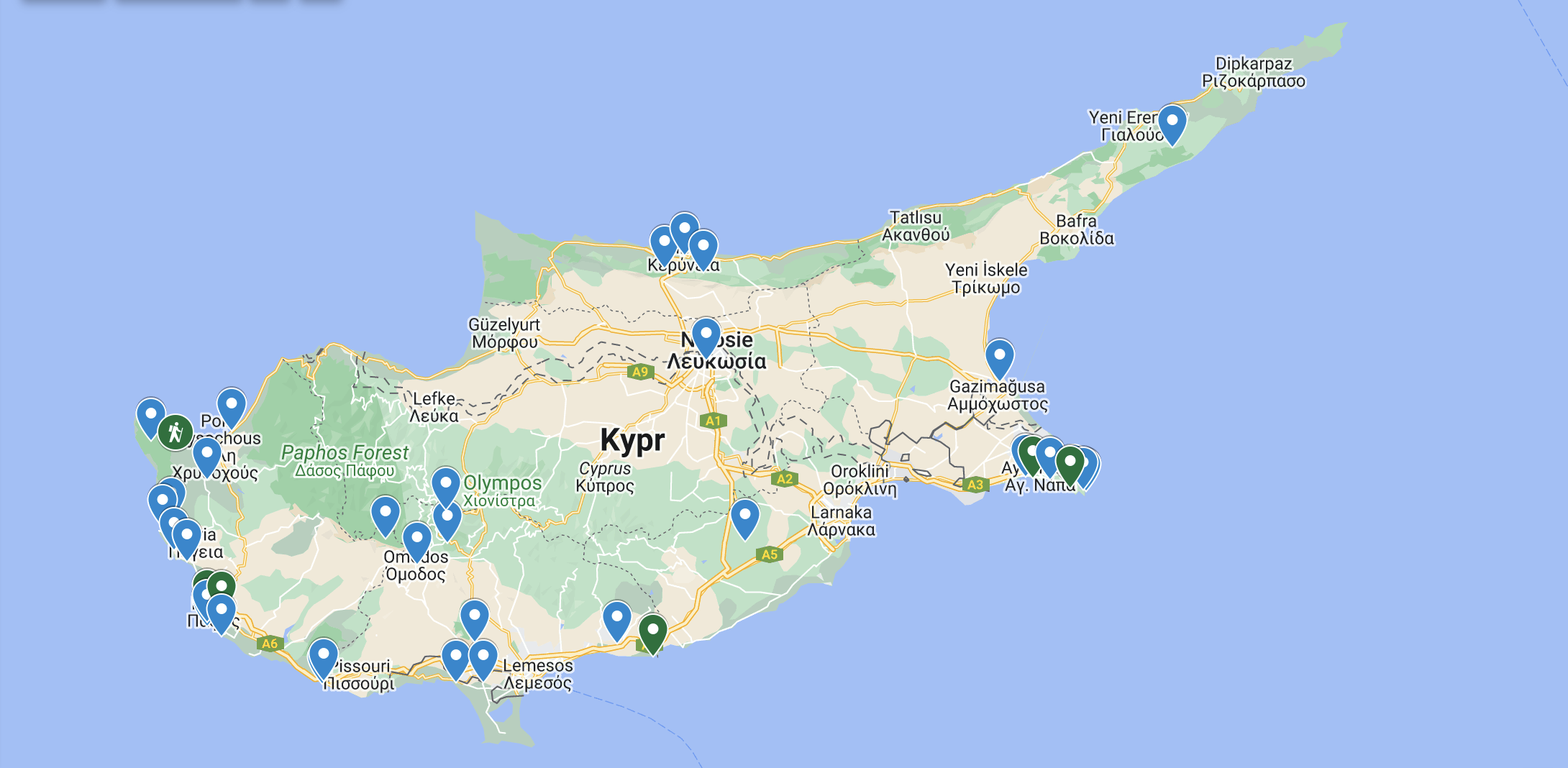
TOP 27 Places That Will Amaze You in Cyprus
Of course, there are many more, but here’s a selection of the most beautiful ones we managed to visit in 11 days. The places are ranked based on where we enjoyed the most, making them absolute must-sees.
1 Aphrodite Nature Trail
Length: 9.7 km (circular route)
Terrain: Moderately challenging
Route link: HERE
Entrance fee: Free
If you had to choose just one hike in Cyprus, I would recommend the Aphrodite Nature Trail. Good weather is definitely necessary, but the views are some of the most beautiful. The hike starts at the large parking lot near the Baths of Aphrodite restaurant. The terrain is not too difficult, but expect some elevation gain (about 460 meters over the entire route). There is also the option to take a shorter loop and shorten your hike at the junction near the ruins of Pyrgos tis Rigainas.
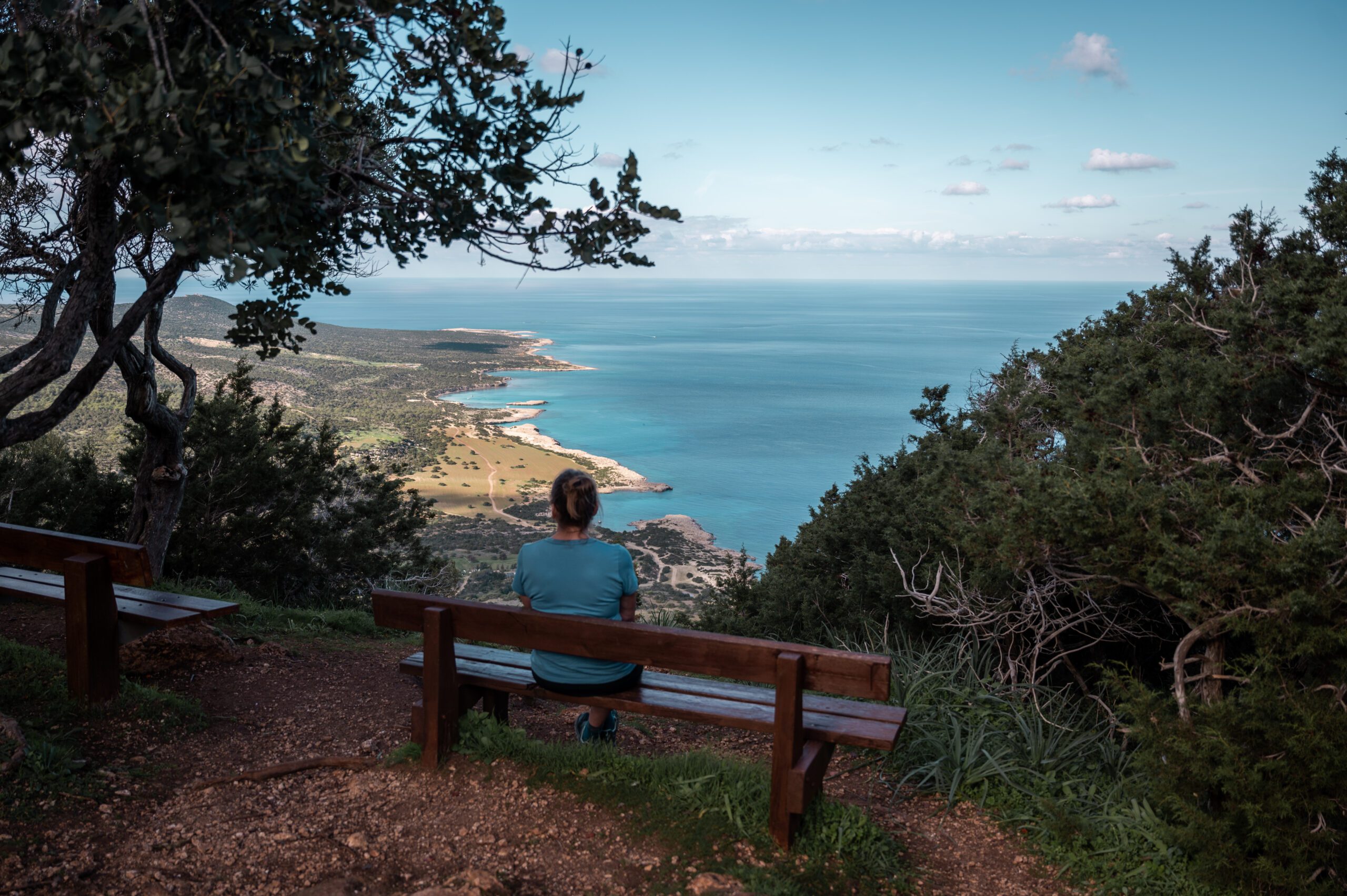




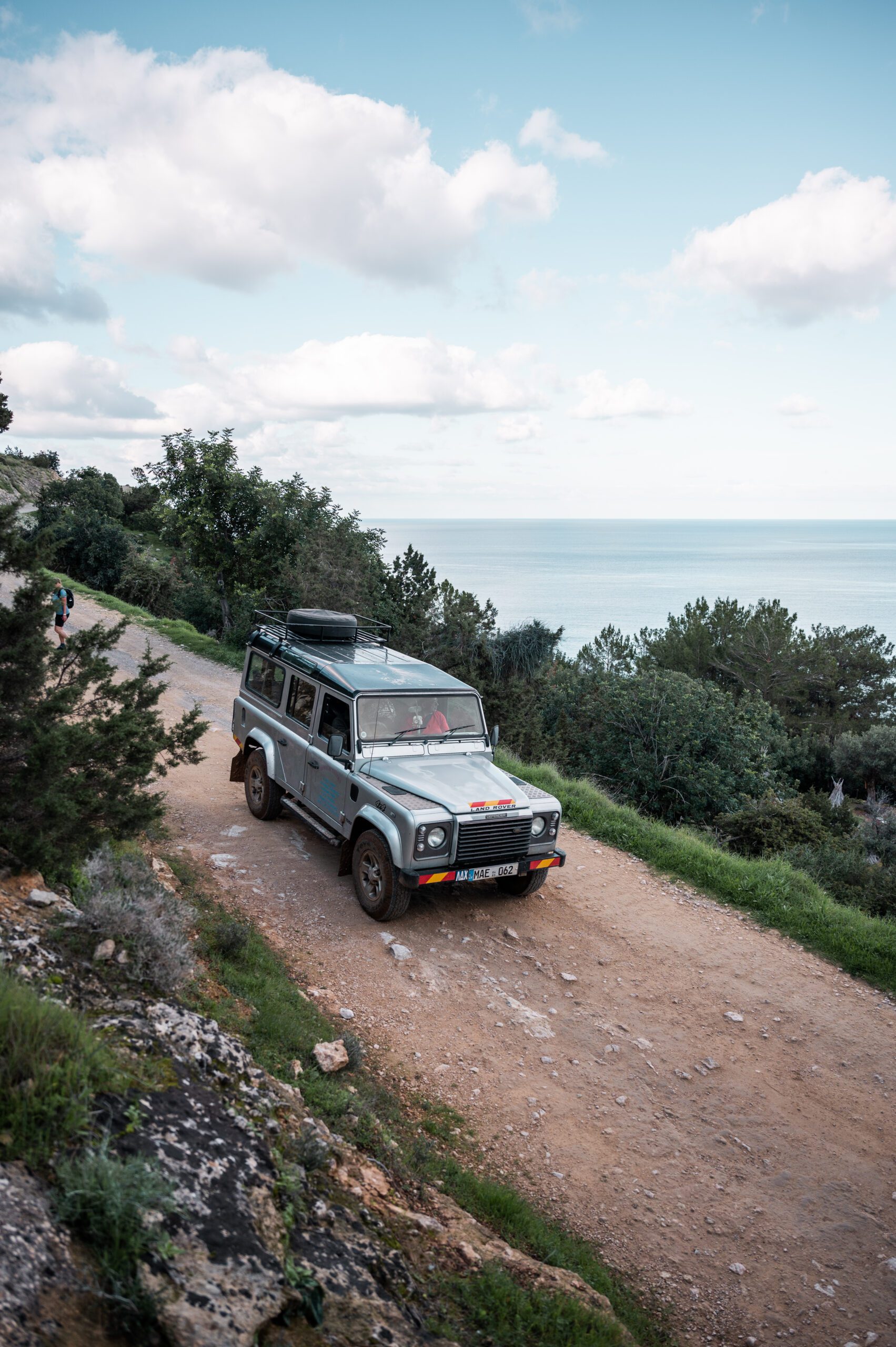



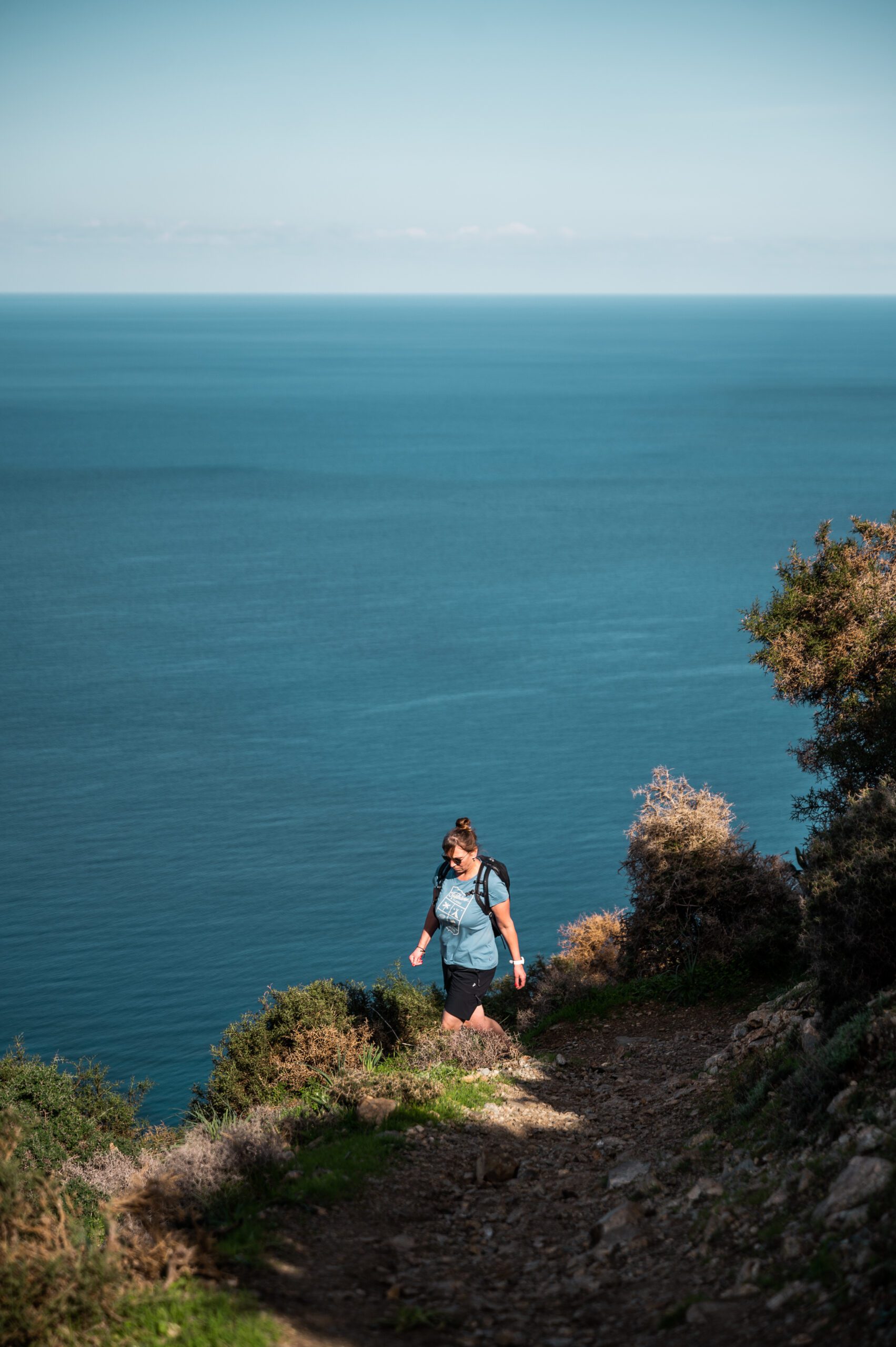



2 Avakas Gorge Trail
Length: 11.6 km (circular route)
Terrain: Moderately challenging
Route link: HERE
Entrance fee: Free
The second hike that’s definitely worth doing is the Avakas Gorge. It’s a canyon, so make sure to wear good footwear. The canyon holds rainwater, so at the beginning, you’ll be balancing on dry rocks.
You can park at several spots. We had initially planned to park at this parking lot, but it was under reconstruction, so we ended up walking to the entrance from a white Greek chapel.
The gorge itself is relatively short, so if you don’t feel up for the nearly 12 km hike, you can turn back as soon as the gorge starts to widen. If you decide to go for the full loop, you’ll be rewarded with entirely different views than what you’ve seen so far. Once the trail starts to ascend, you’ll know you’re leaving the gorge. The second half of the route takes you across grassy plains with amazing views and plenty of sheep.




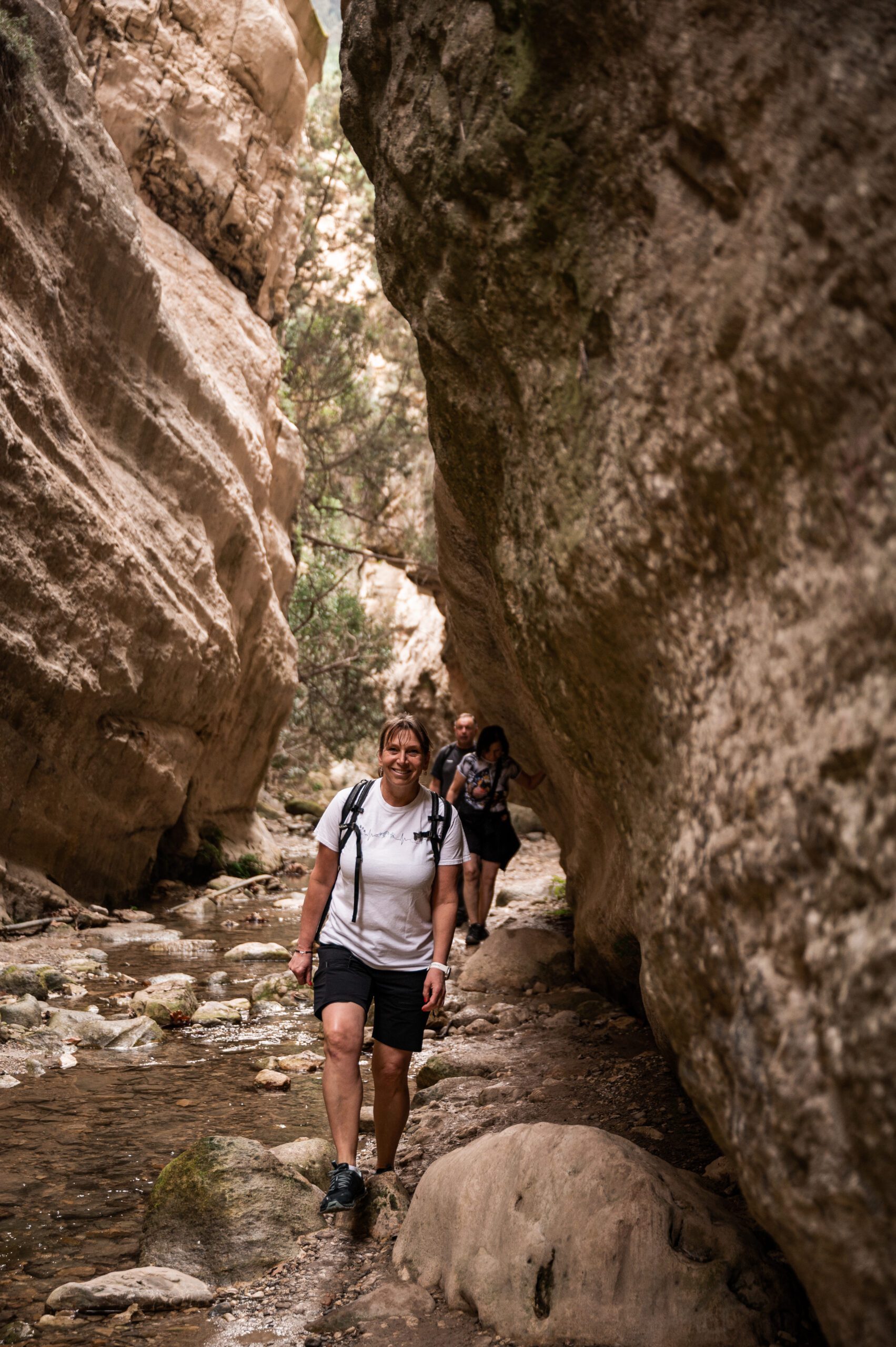


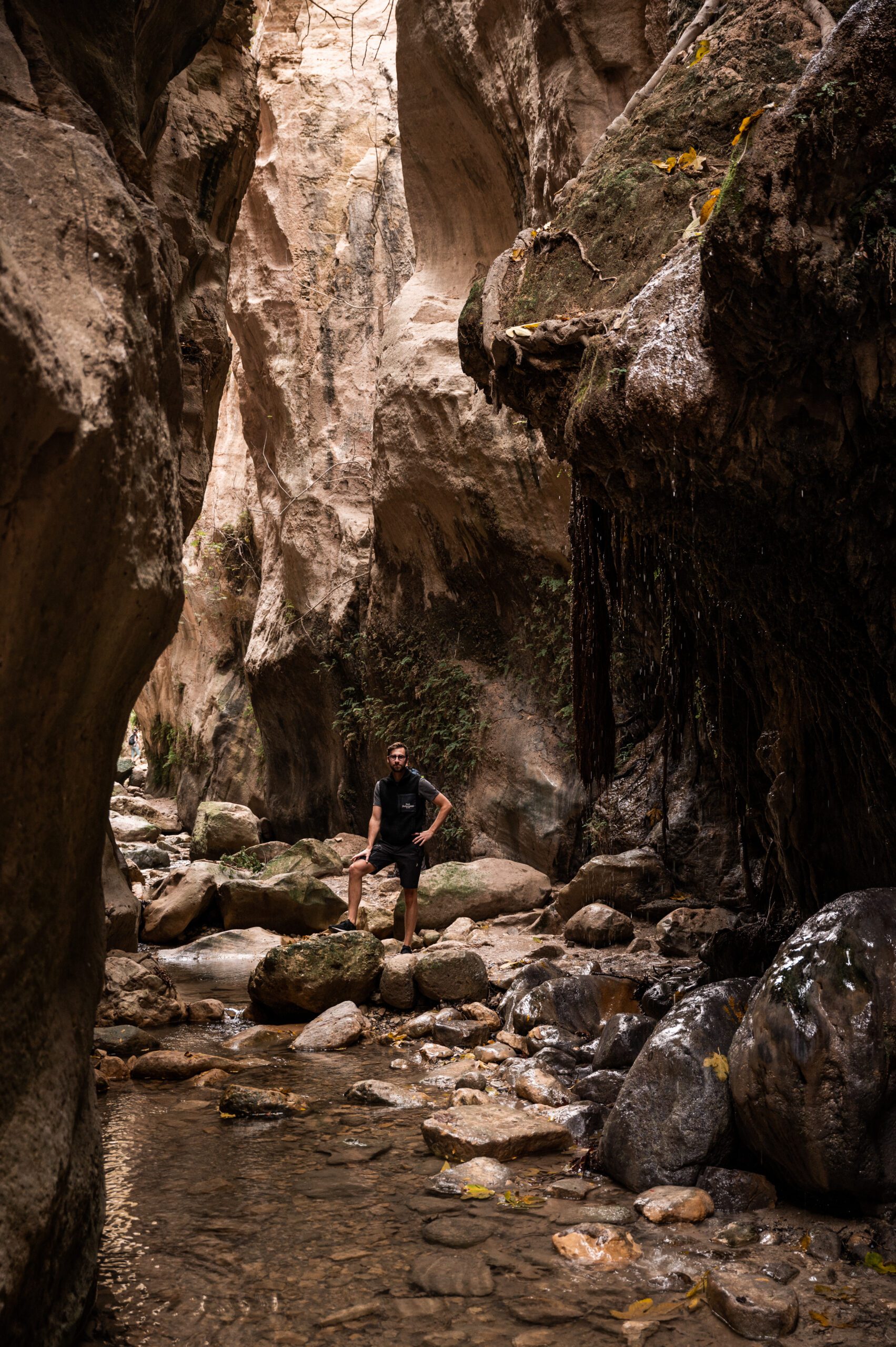



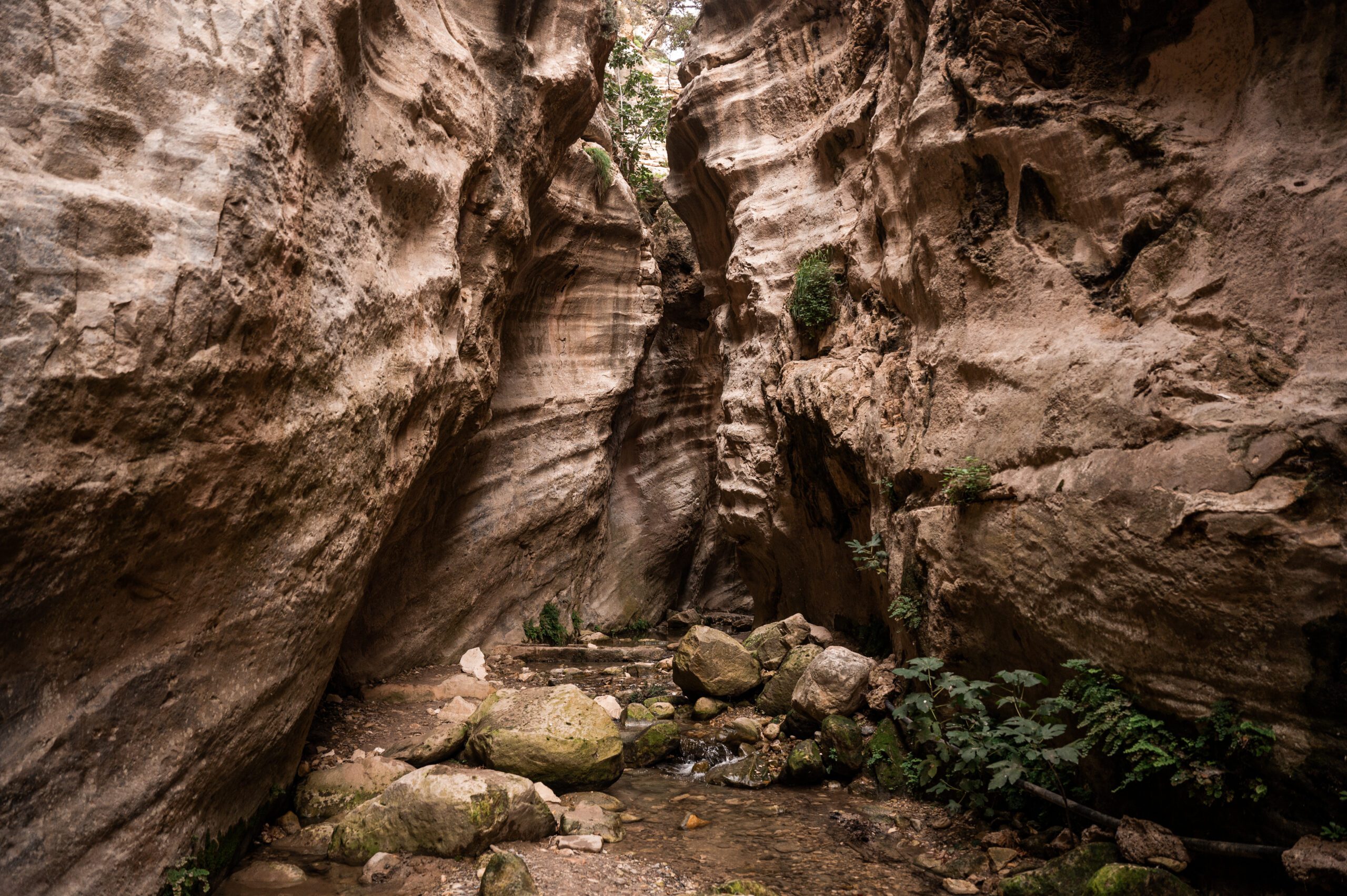


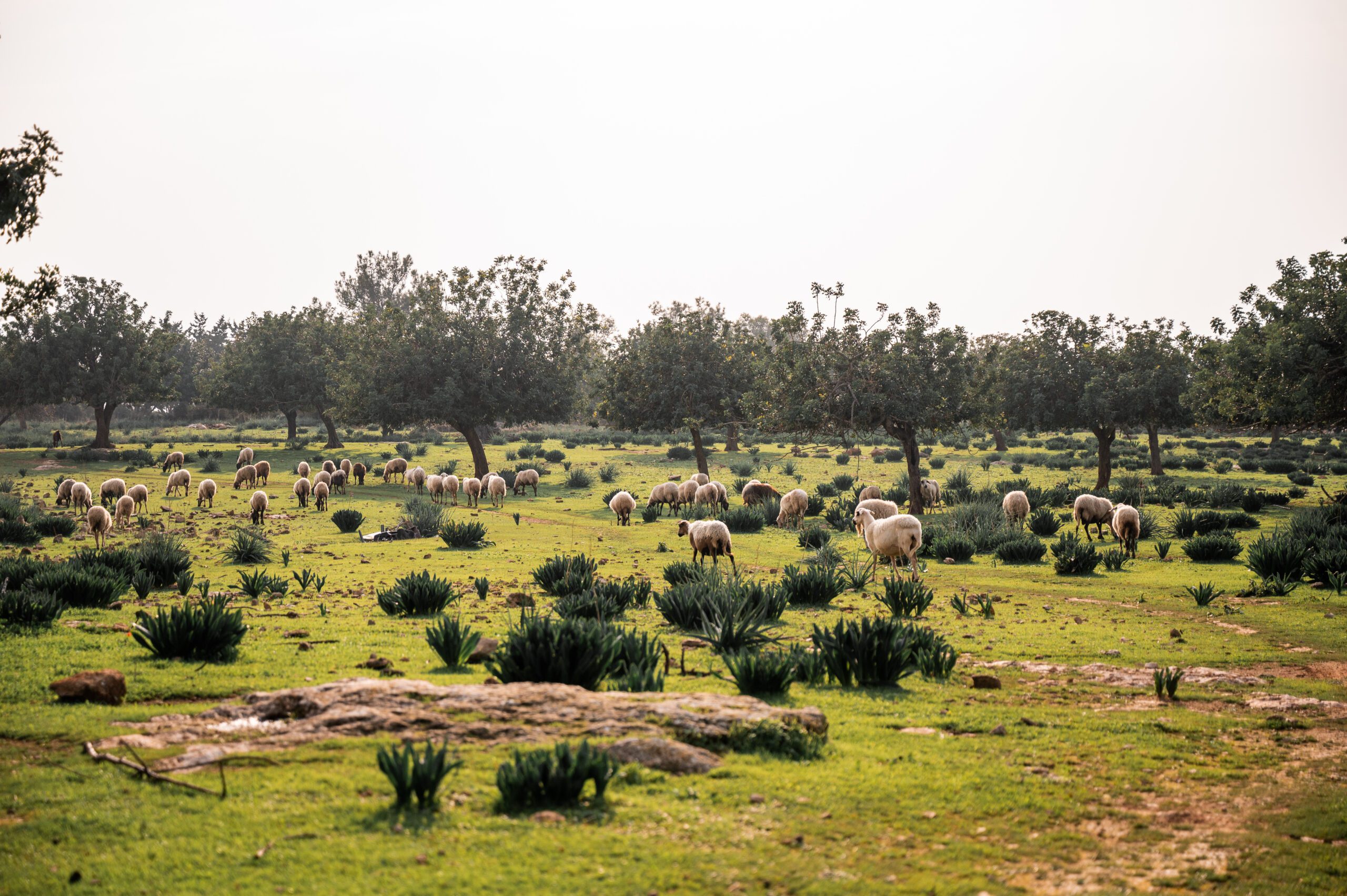


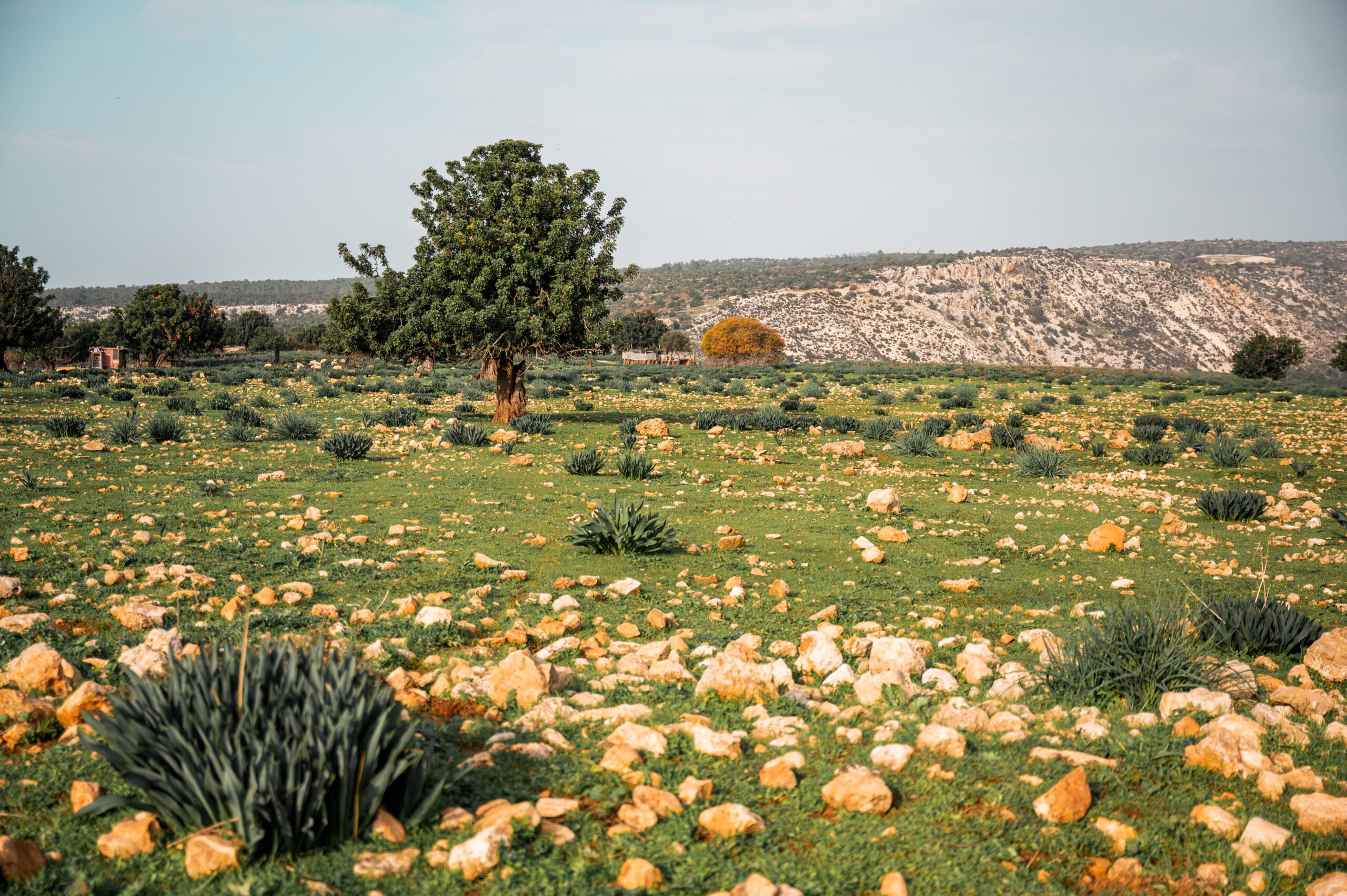
3 Sea Caves in Ayia Napa
Length: 100 m from the parking lot
Parking link: HERE
Location link: HERE
Entrance fee: Free
If there’s one natural phenomenon that’s characteristic of Cyprus, it’s the sea caves created by erosion along the coastal cliffs. There are plenty of them around Ayia Napa, but there’s one spot where you can get the most beautiful photos. Besides the caves, nature has also created a kind of “window” in the rock with a view of the caves. You may not have this spot all to yourself, as many tourists have already discovered it, but it’s definitely worth adding to your itinerary.
The road to the parking lot is a dirt path, so be careful of large potholes. The window is not visible from the parking lot, and if you don’t know about it, you might miss it. Once you park, head down to the cliffs and look for the worn path leading towards the sea beneath the rocks.







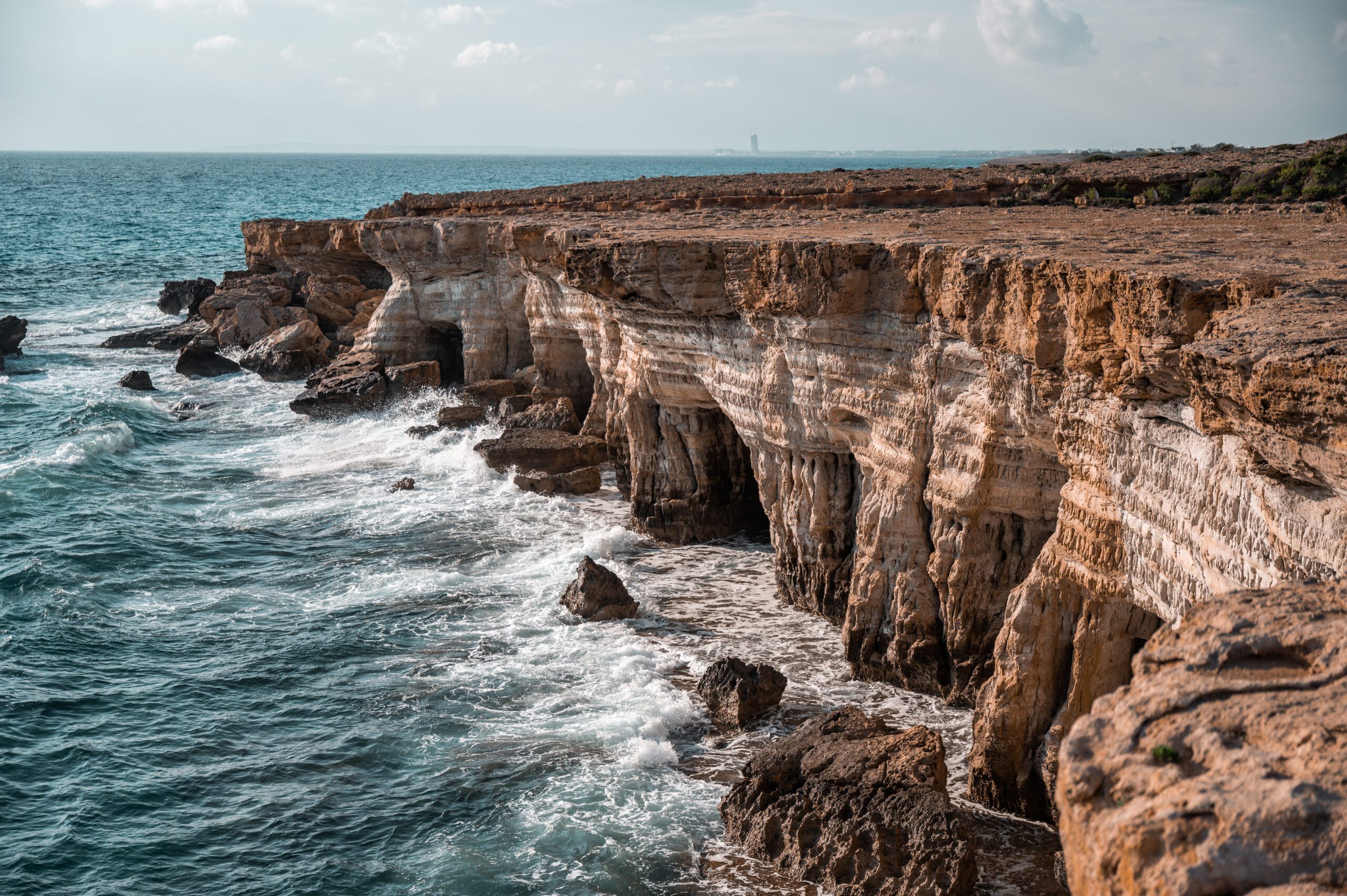


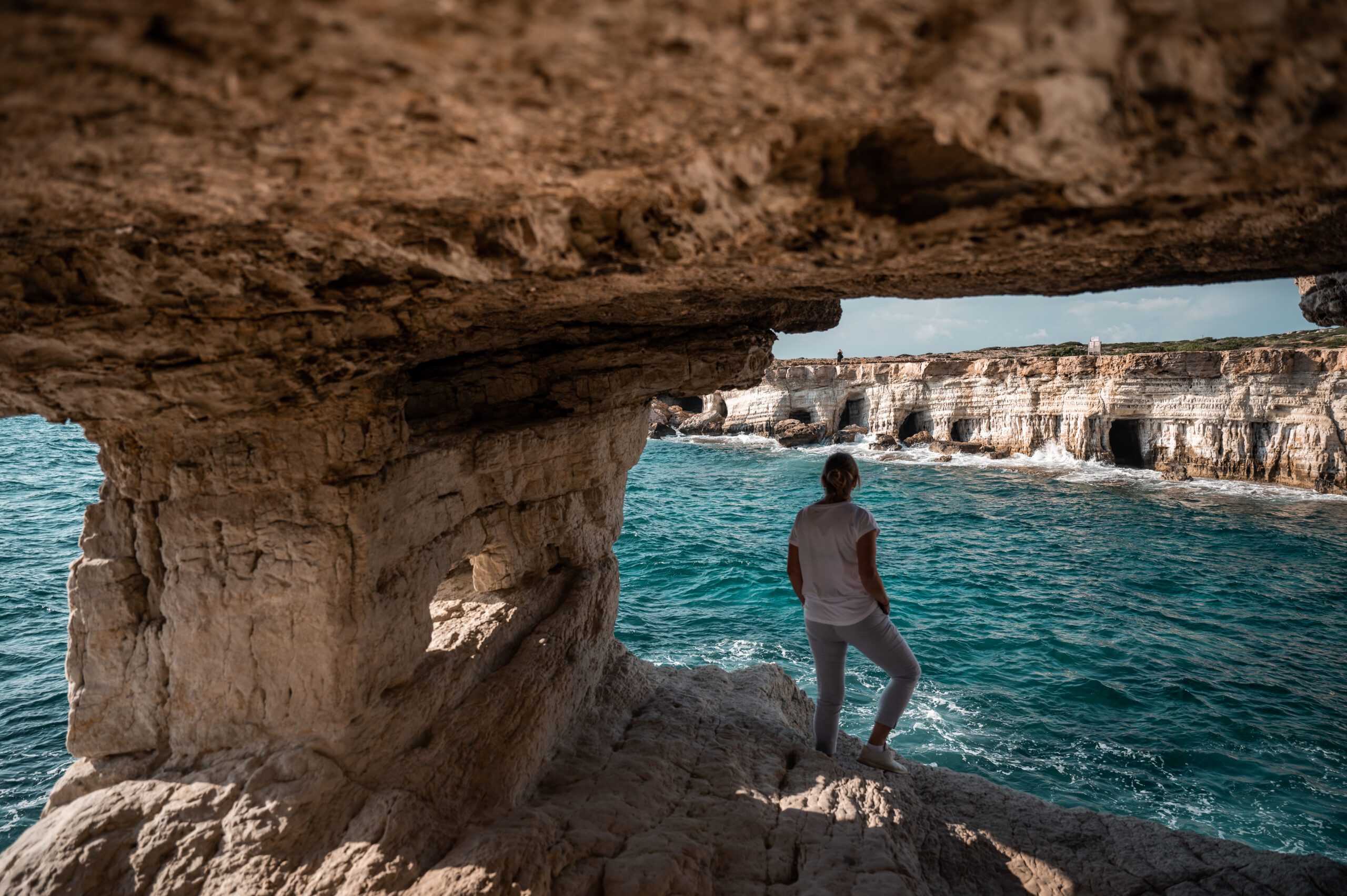
4 Bridge of Lovers
Length: 20 m from the parking lot
Parking link: HERE
Location link: HERE
Entrance fee: Free
You’ll find a beautiful rock arch rising from the sea near the town of Ayia Napa. The arch is not visible from the road, so don’t be misled—park at the small dirt parking lot by the bend in the road. From there, just walk towards the sea, and you’ll be rewarded with stunning views. You’re allowed to walk on the arch itself. While you’re there, I recommend walking a few hundred meters along the coast to the left. You’ll see the arch from a slightly different angle, and it’s a nice little stroll.







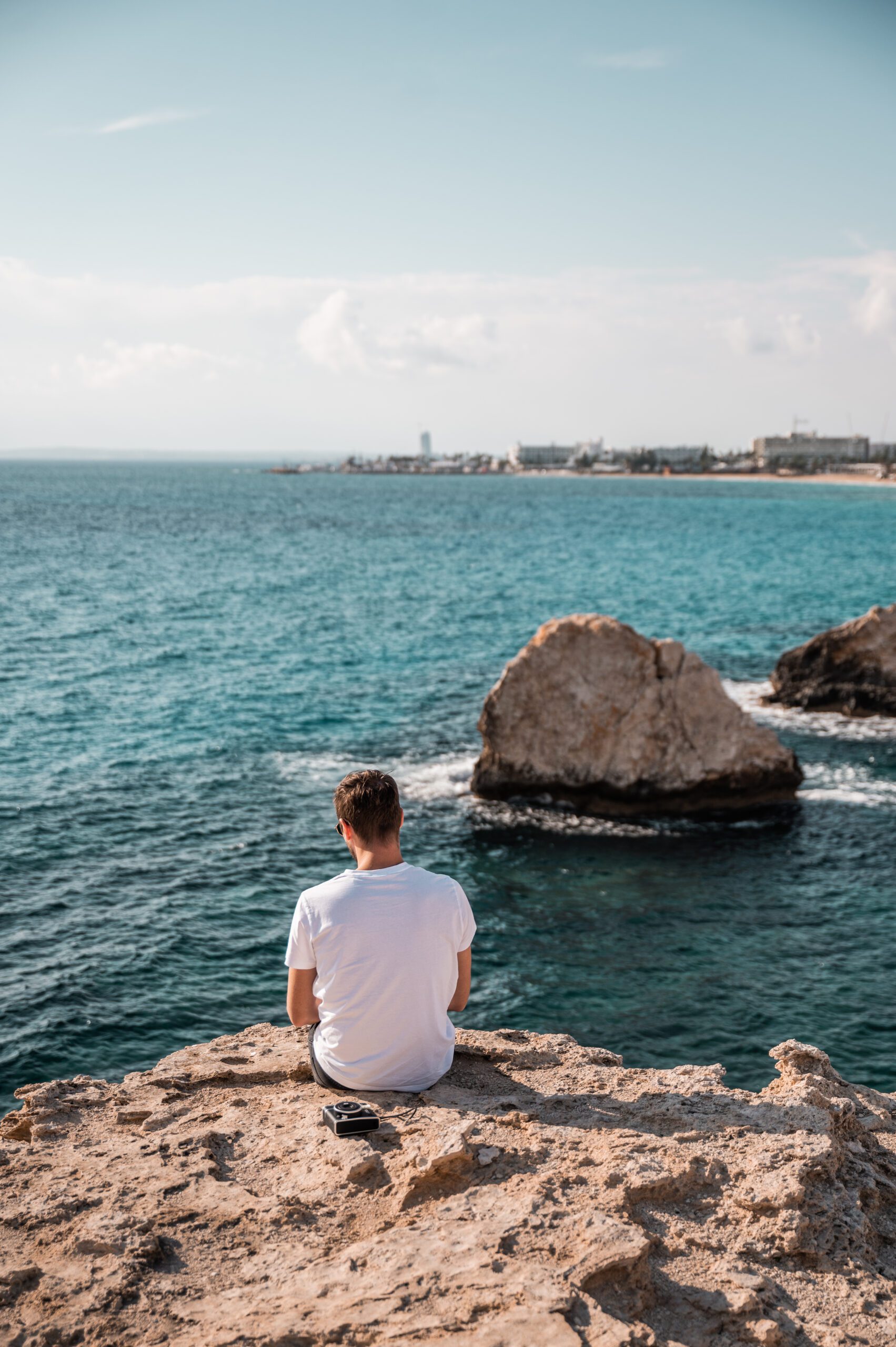
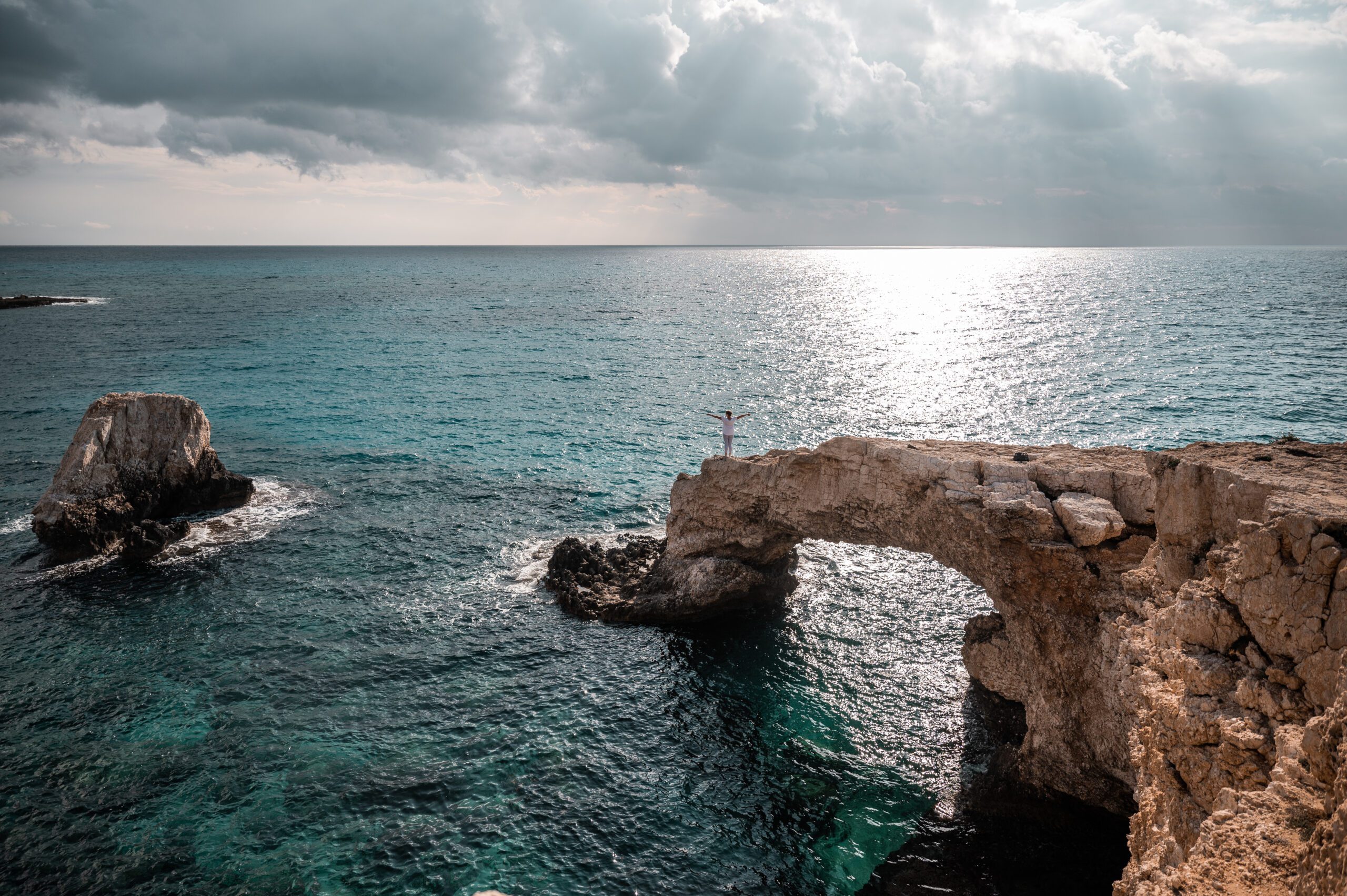
5 Tombs of the Kings
Parking: HERE
Entrance fee: €2.5 (2022)
Now, let’s dive into something historical, and Cyprus has quite a few historical sites. The over 2000-year-old tombs are located on the outskirts of Paphos and are listed as a UNESCO World Heritage site. What’s interesting is that no kings were ever buried here—the tombs were used only for burying wealthy aristocrats and prominent leaders. All the tombs are open to the public, so you can literally walk through their foundations, which is quite an experience.




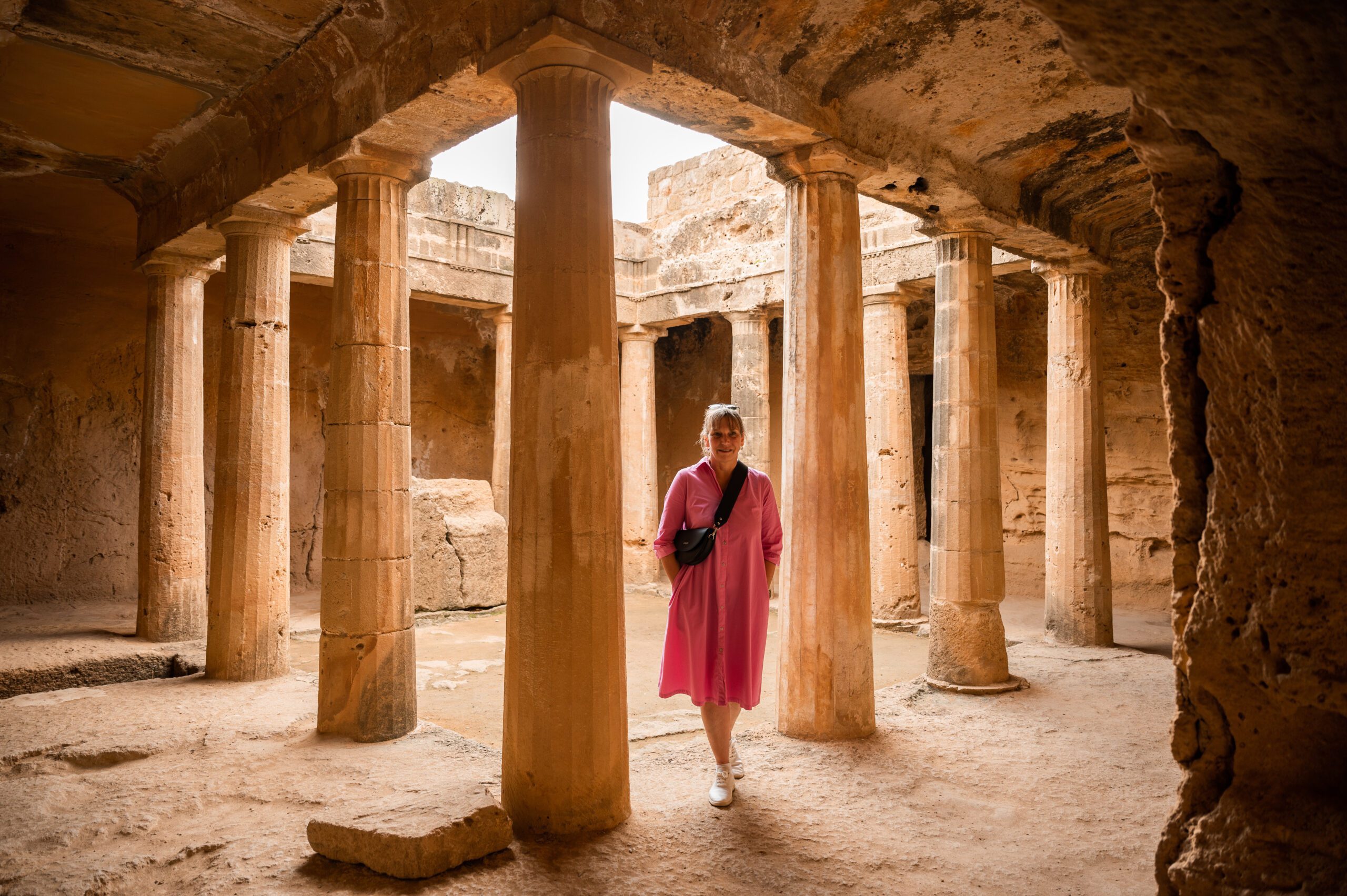

6 Mount Olympus
Length: 13.7 km (circular route)
Terrain: Easy
Route link: HERE
Entrance fee: Free
The highest mountain in Cyprus, measuring 1,952 meters, is located in the Troodos mountain range. You don’t need to plan your visit weeks in advance, as it’s easily accessible by car. There are just two main hiking loops (Atalante Trail and Artemis Trail), so there’s no need for much decision-making. Both trails offer a completely different nature experience compared to the coastline.
We split into two groups—one took the shorter Artemis trail, and the rest of us did the longer Atalante trail. After sharing our experiences, we agreed that the trails were quite similar. Even though you’re not at the highest point of the island, both trails mostly follow the contour lines, so don’t expect steep climbs.
The temperature difference (and generally, the weather) between the coast and Mount Olympus is unusually stark. During our visit, it was about 22°C by the sea, and up here, it was -1°C! There was even a light dusting of snow on the northern side of the mountain, which is definitely something you wouldn’t expect in Cyprus, even in December.
And did you know that you can ski on Olympus (well, maybe used to)? There’s a rusty ski lift, and it was hard to tell whether it still works or if it had long since been forgotten.


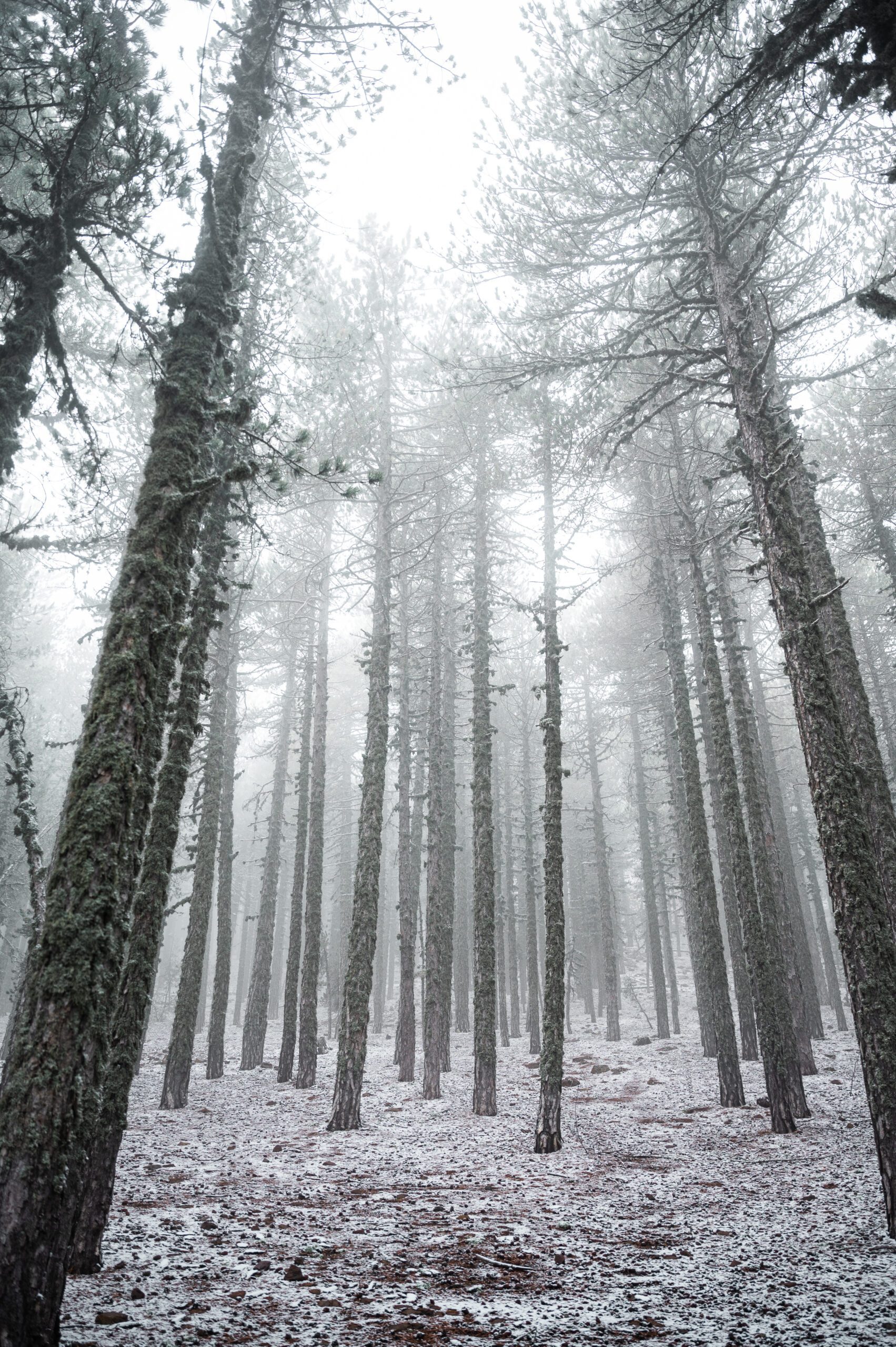















By the way, when you’re leaving Mount Olympus, make a quick stop at the viewpoint. On a clear day, you can see the sea from here, which is quite a unique experience. You can find the viewpoint here.



7 Aphrodite’s Rock
Length: 100 m from the parking lot
Parking link: HERE
Location link: HERE
Entrance fee: Free
Cyprus is proud to be the birthplace of the goddess of love, Aphrodite, who emerged from the sea foam. While you probably won’t see Aphrodite herself, you’ll be treated to a beautiful beach with rocks and boulders. The most stunning view is definitely at sunset.
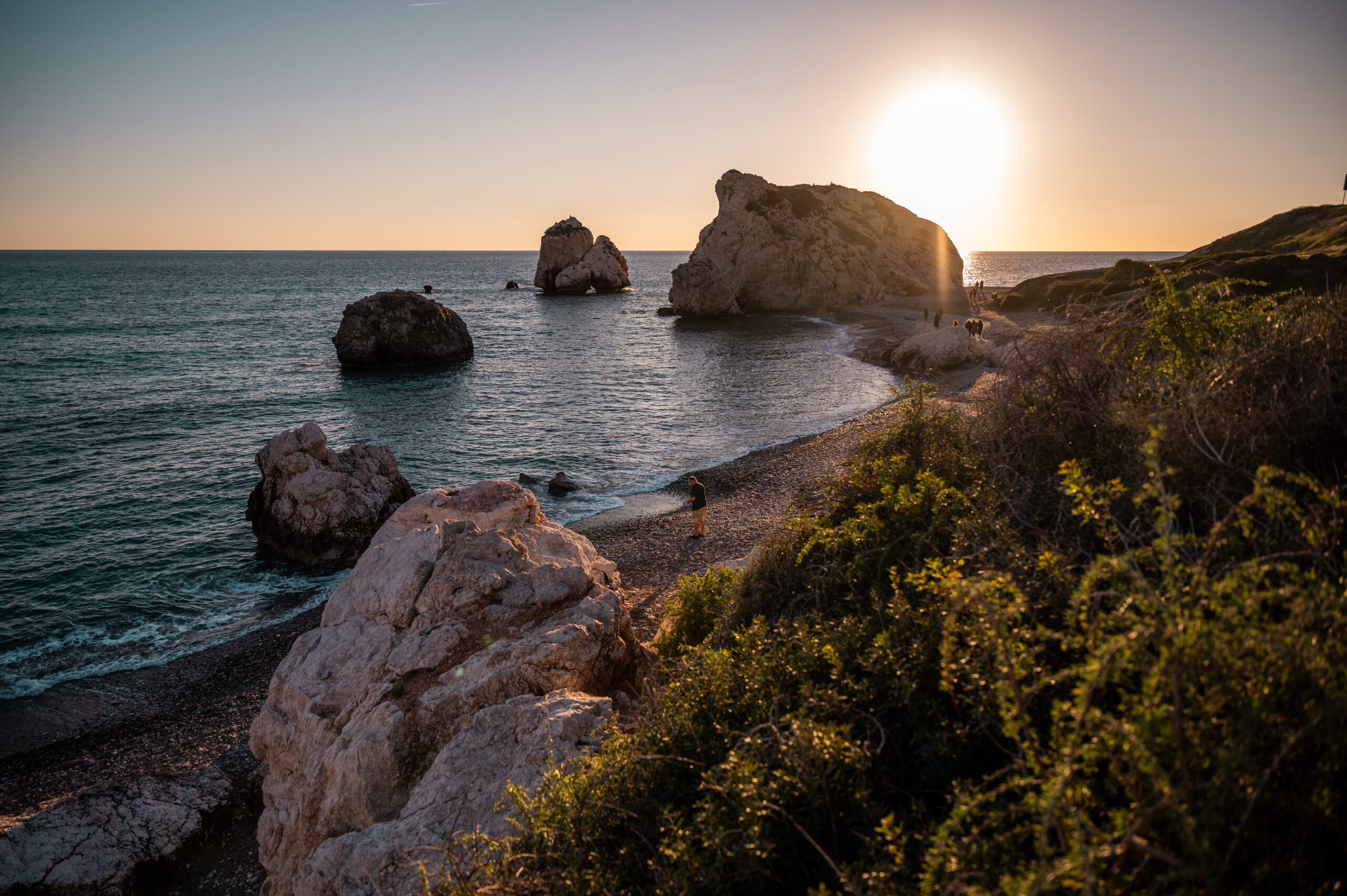

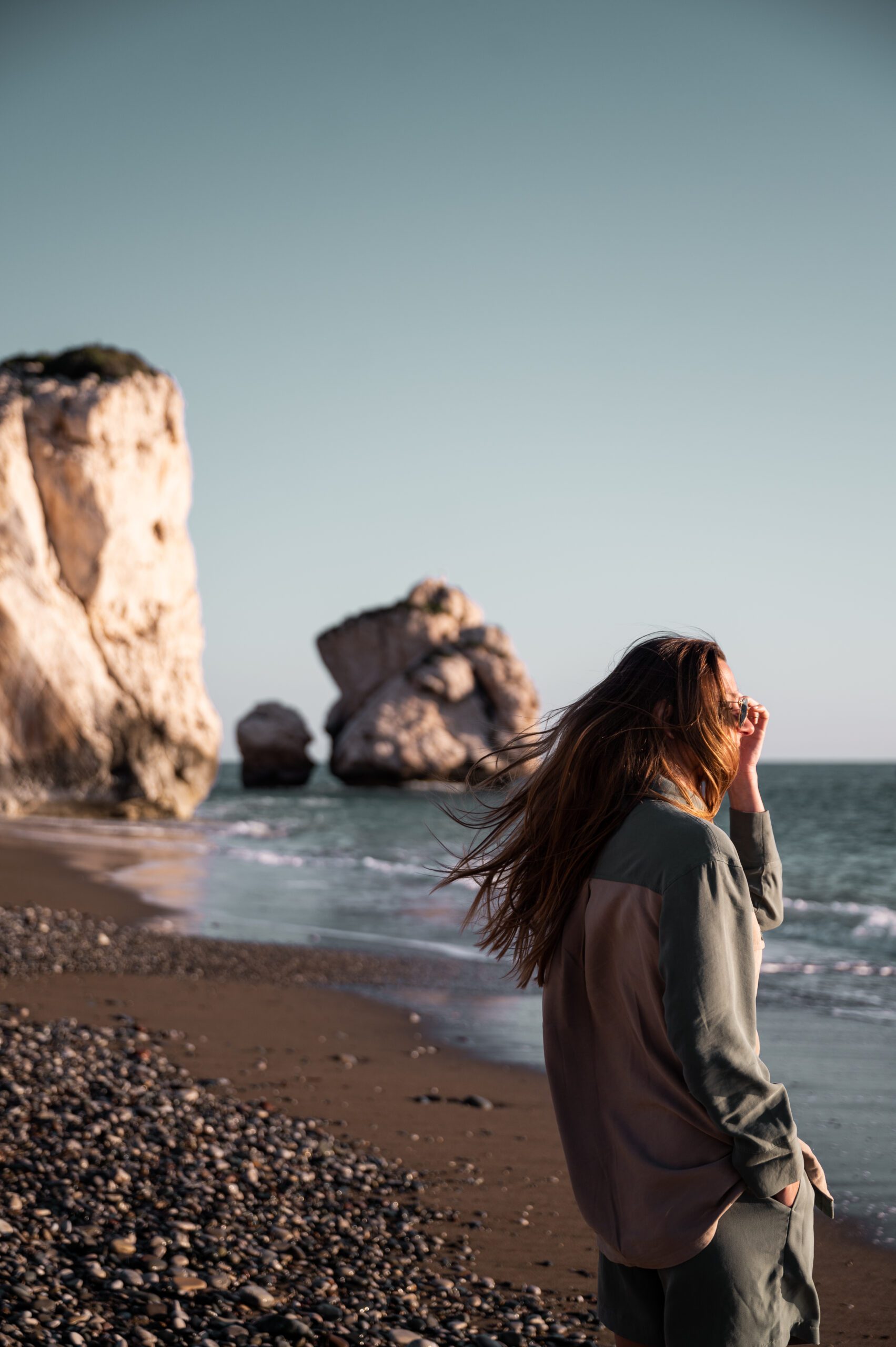



8 White rocks
Length: 100 m from the parking lot
Parking link: HERE
Location link: HERE
Entrance fee: Free
Under the name White Rocks, you’ll find exactly what you’d expect—white stones. Located on the southern coast, there’s a road leading right to them, so you can park directly by the rocks. From there, it’s up to you how far you venture along the coast. It’s one of the few coastal areas that looks completely different from the rest.
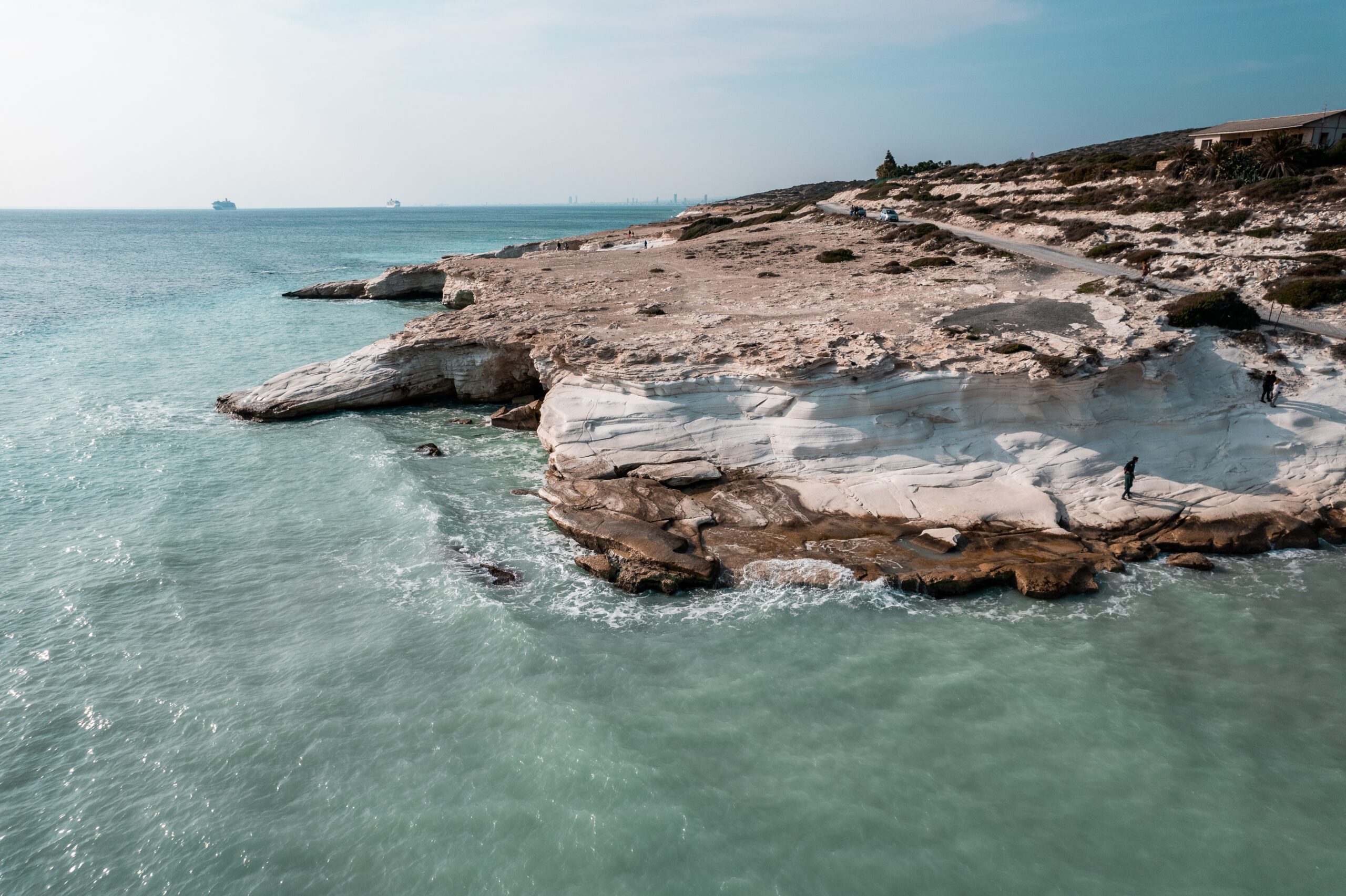


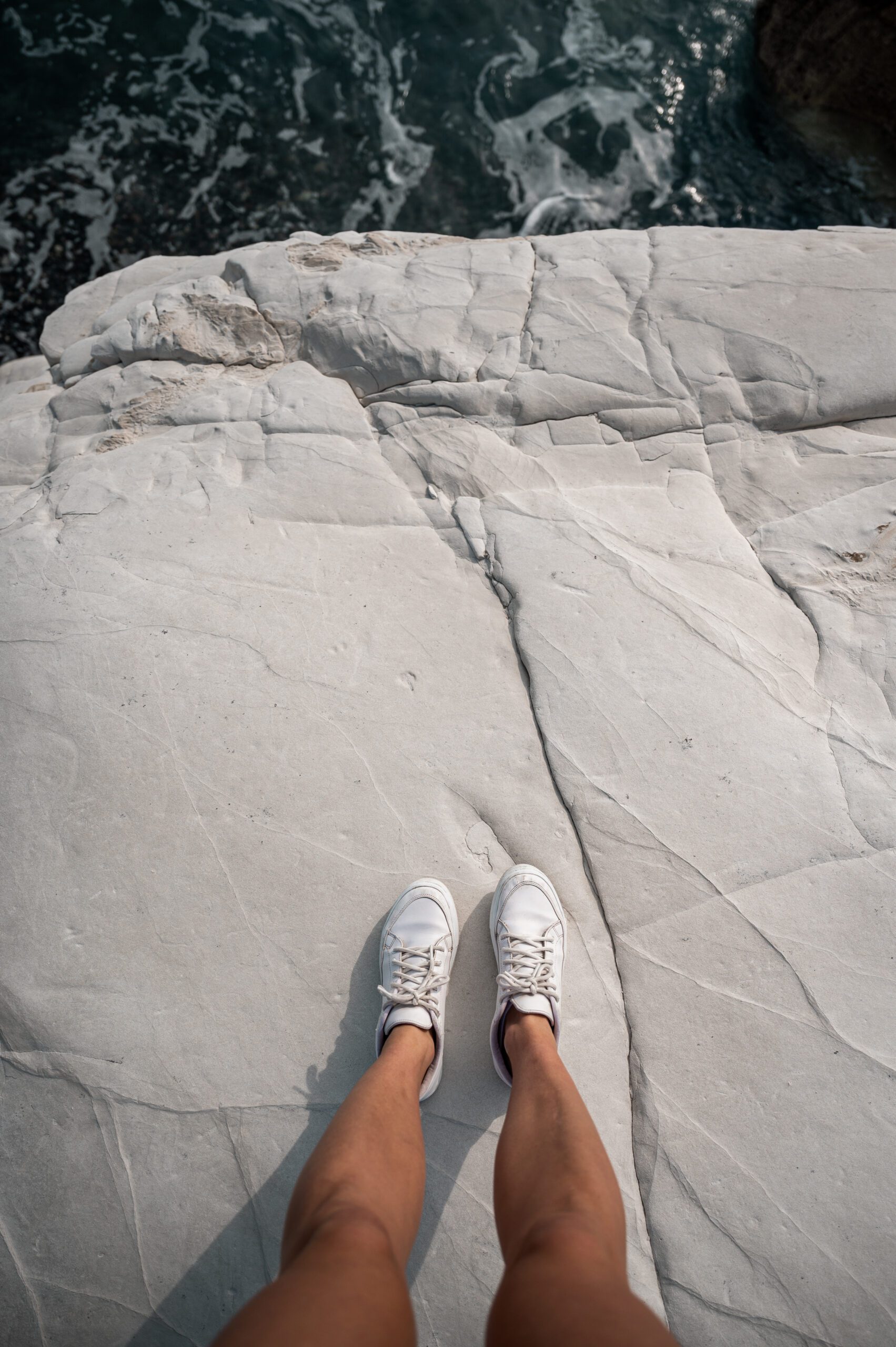








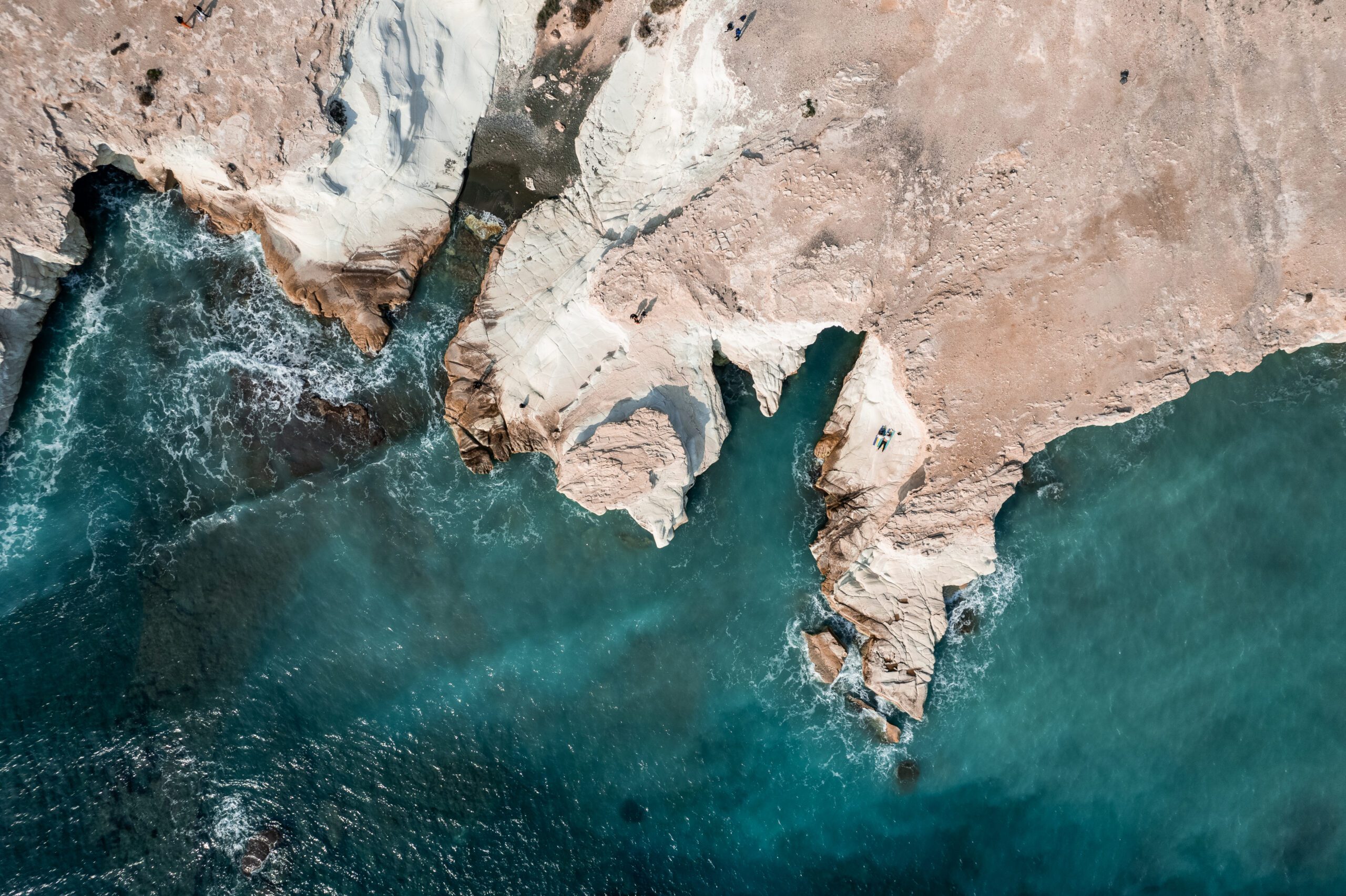
9 Nissi Beach
Trail length: 100 m from the parking lot
Parking link: HERE
Location link: HERE
Entrance fee: Free
If you’re heading to Cyprus to relax by the sea, Nissi Beach is probably on your radar. It’s famous for its white sand, which you’ll remember for a long time. Even in December, we couldn’t resist taking a swim. Or rather, we couldn’t not swim, as there wasn’t a soul around, and we felt like we were in the Caribbean. Right off the beach is a small islet that you can walk to when the tide is low.



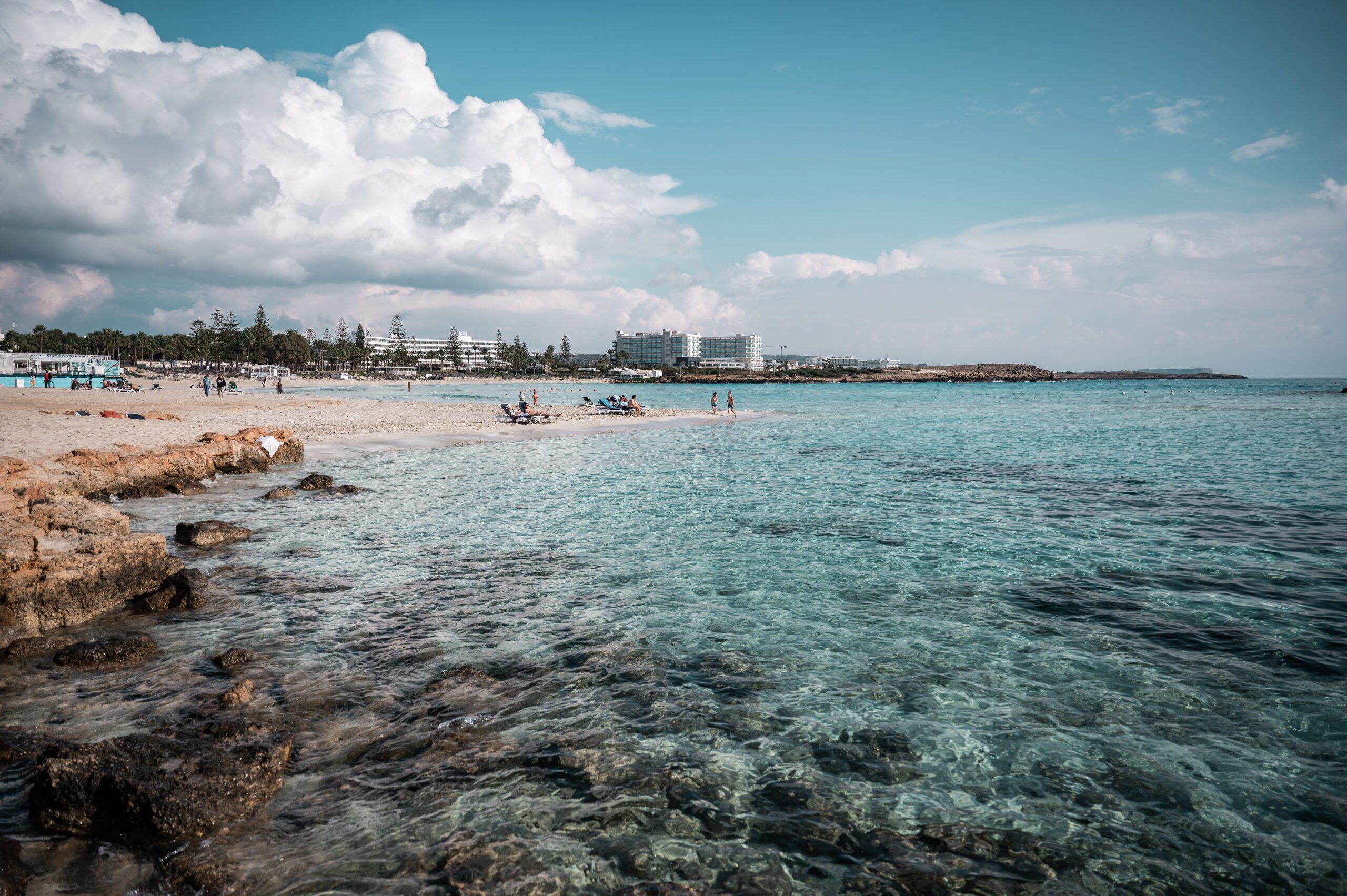



10 Karpas
The Karpas Peninsula is located on the far east of the island, so no matter where you’re staying, it’s quite a drive to get there. It’s probably the least populated area of Cyprus, so it’s often quite wild. From the white beaches, you can even see the Syrian coast.
A big tourist attraction here are the wild donkeys, who flock to cars whenever they see one passing by. At the entrance to the area (there’s only one road, so you can’t miss it), you can buy carrots for a few coins to feed the donkeys from your car window.
The photos are from Golden Beach.
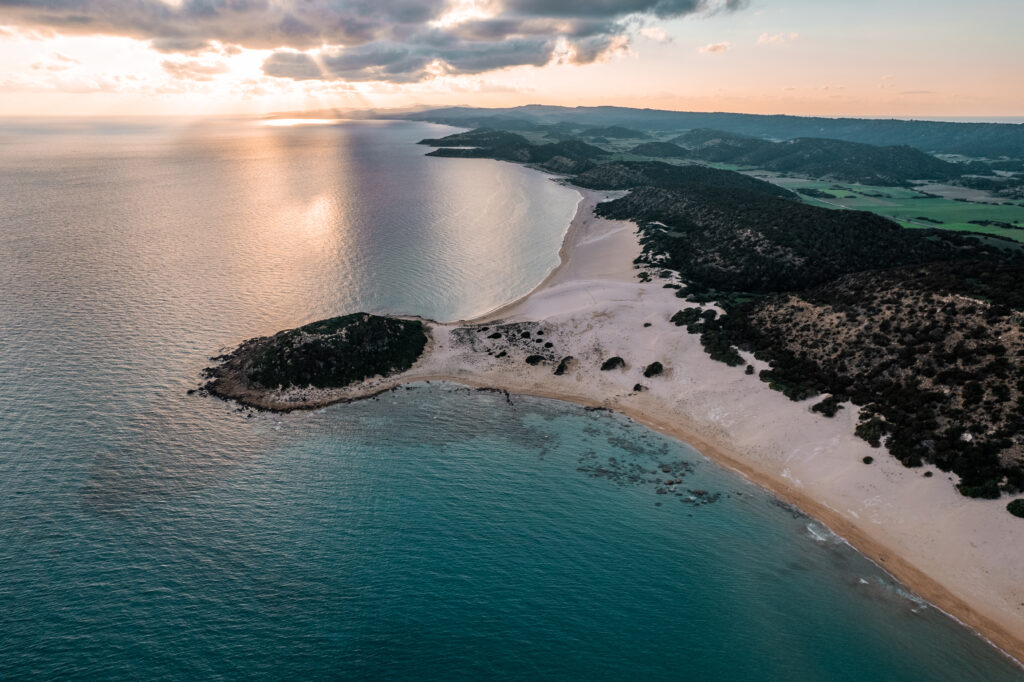
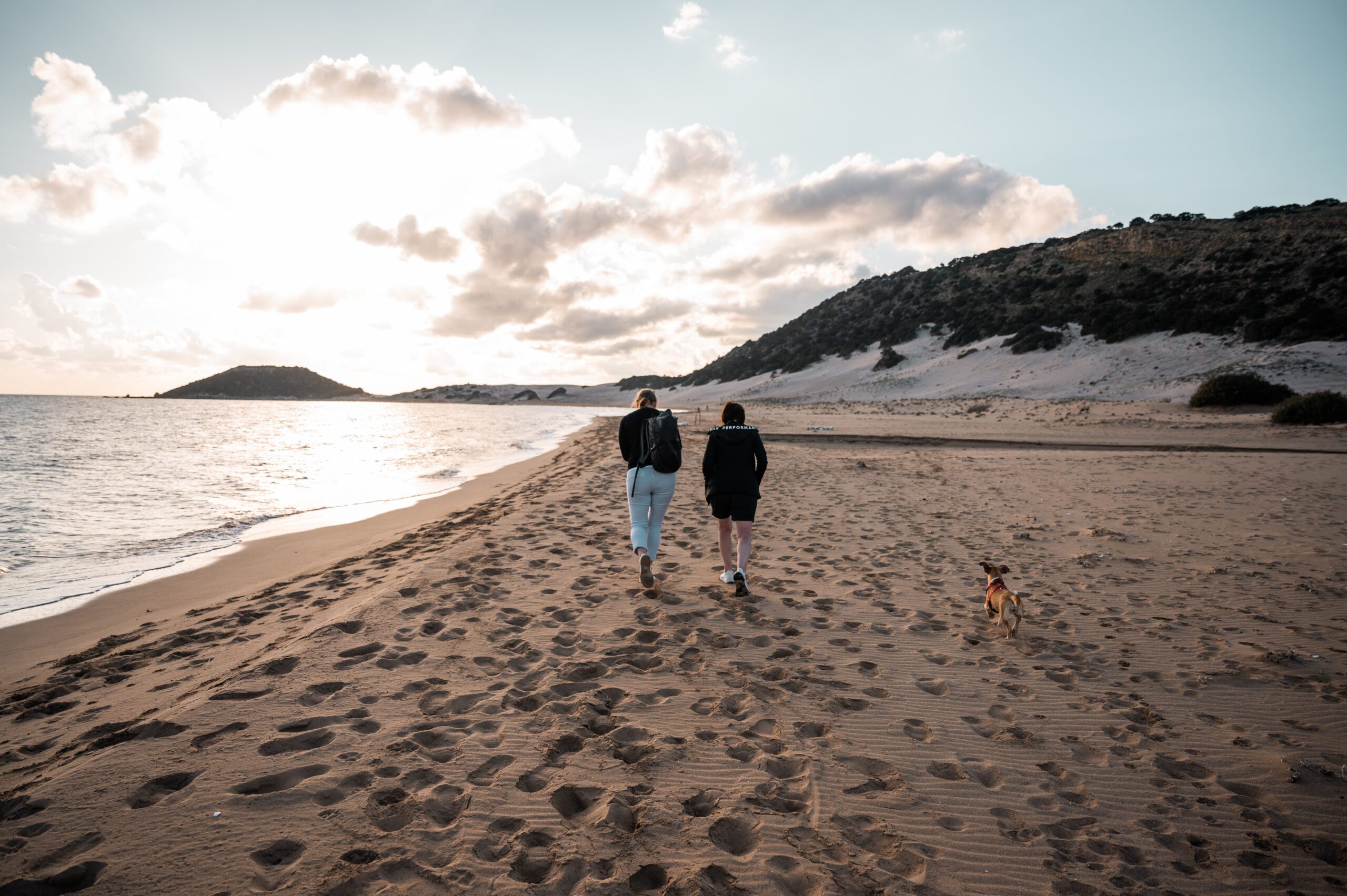









11 Kouris Dam
Kouris is a reservoir that supplies Cyprus with drinking water. Like many other dams, its construction led to the flooding of a previously inhabited area, and to this day, you can find the ruins of a church right on the shore. When the water level is high, the ruins are submerged, and only the church tower rises above the water, which makes for a pretty sight. Unfortunately, we weren’t that lucky, and with the low water level, the whole church was visible.
However, if you have a drone, I highly recommend bringing it along because the shores of the reservoir create incredible shapes and colors when viewed from above.
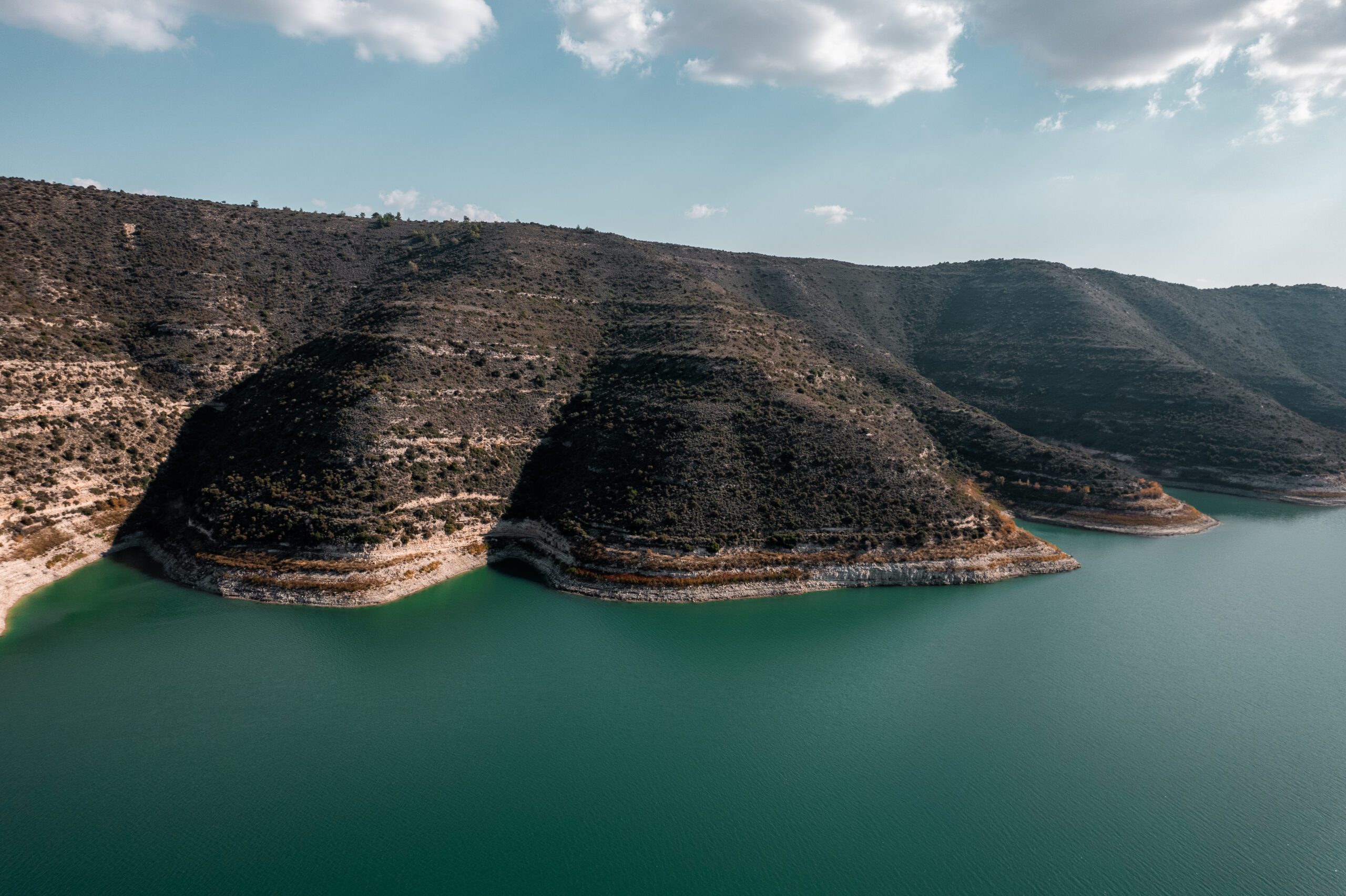

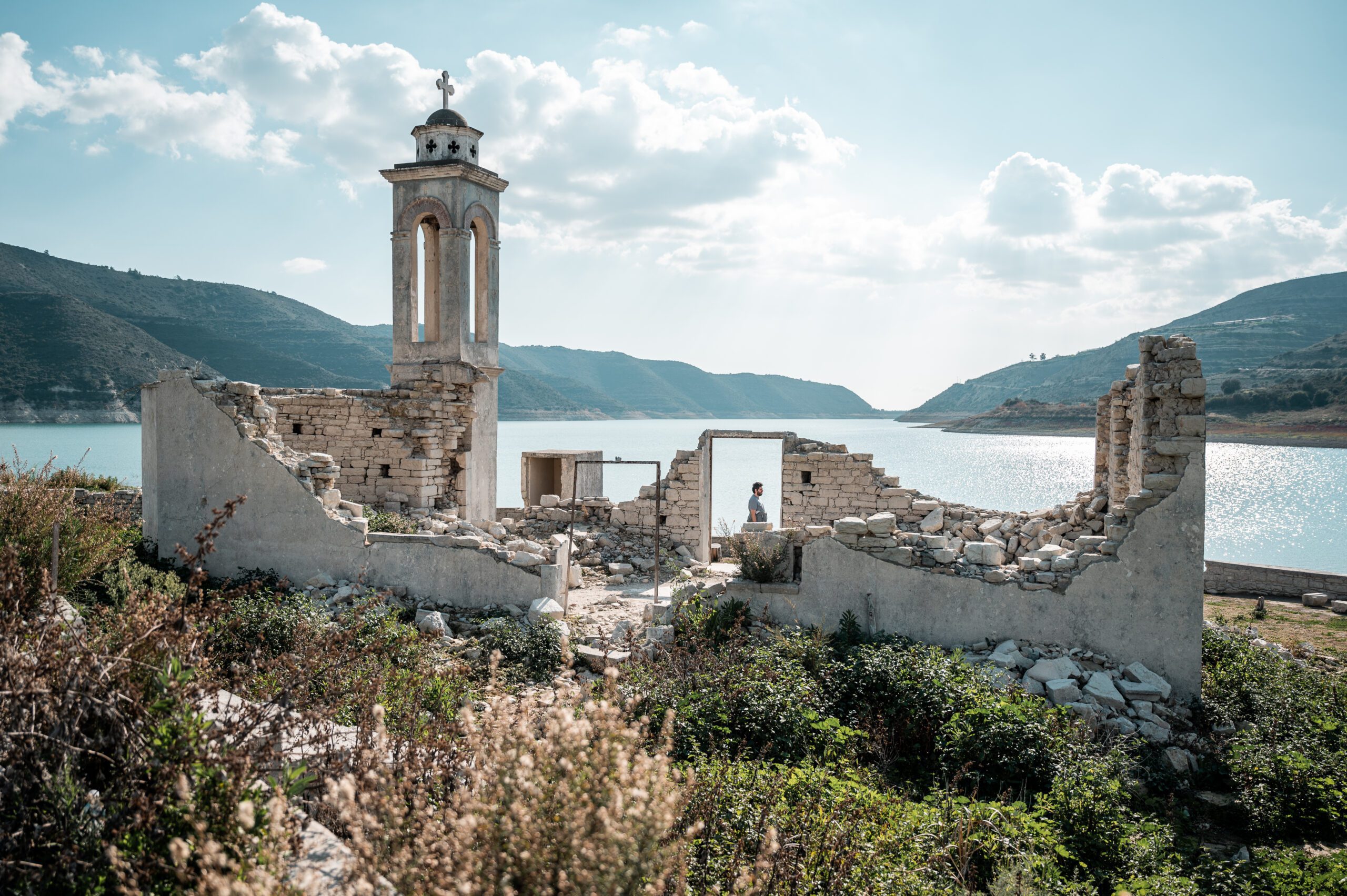


12 Saint Nicholas Church
There are many Greek churches in Cyprus, but if you were to visit just one, it should be the Church of St. Nicholas in Paphos. It stands right on the coast, and thanks to the blue-and-white color of its facade, you’ll feel like you’re in Santorini. Be sure to go inside the church as well—the interior is equally impressive.
This spot is even called “sunset point” because locals come here to watch the sunset.
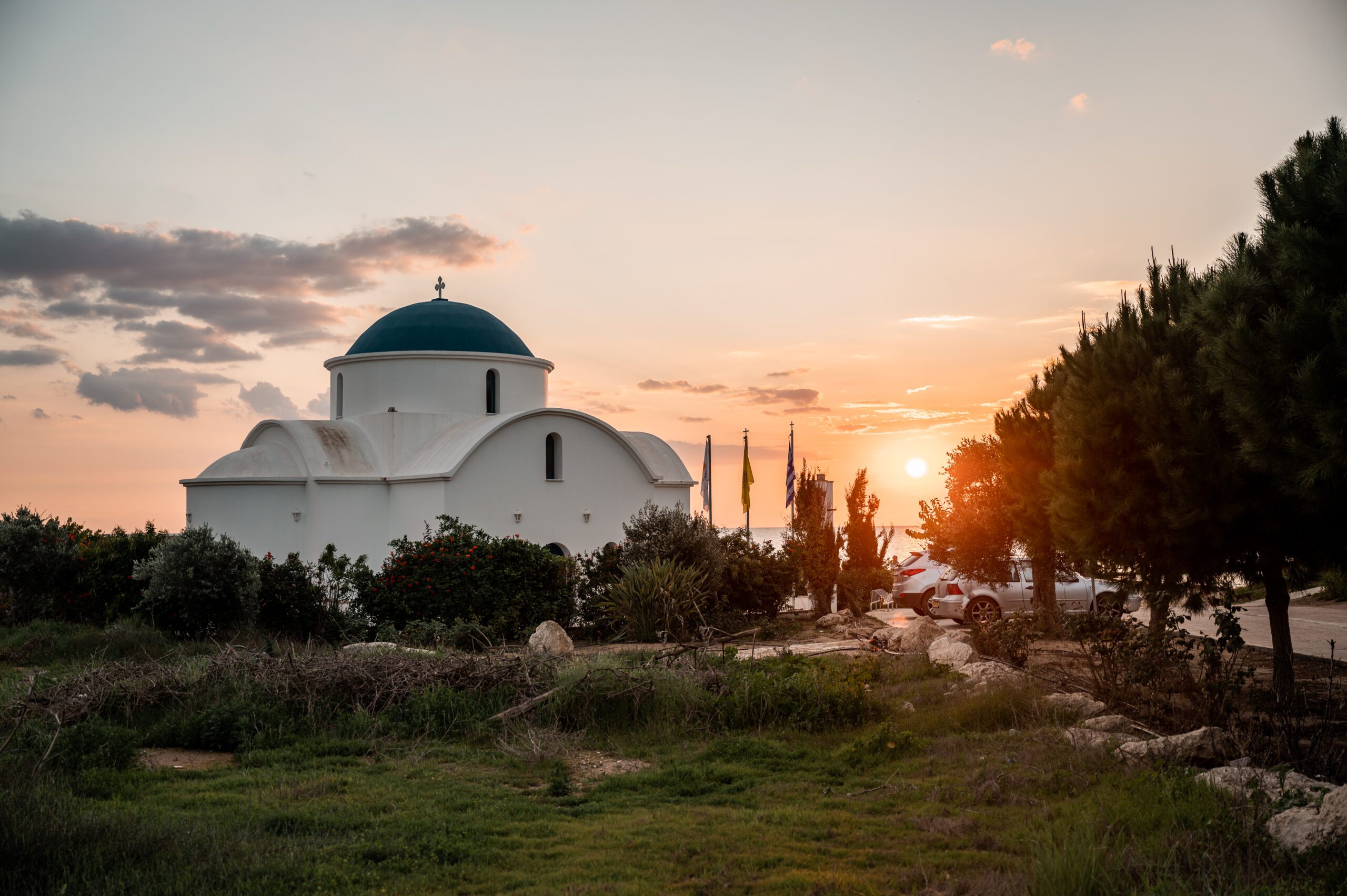






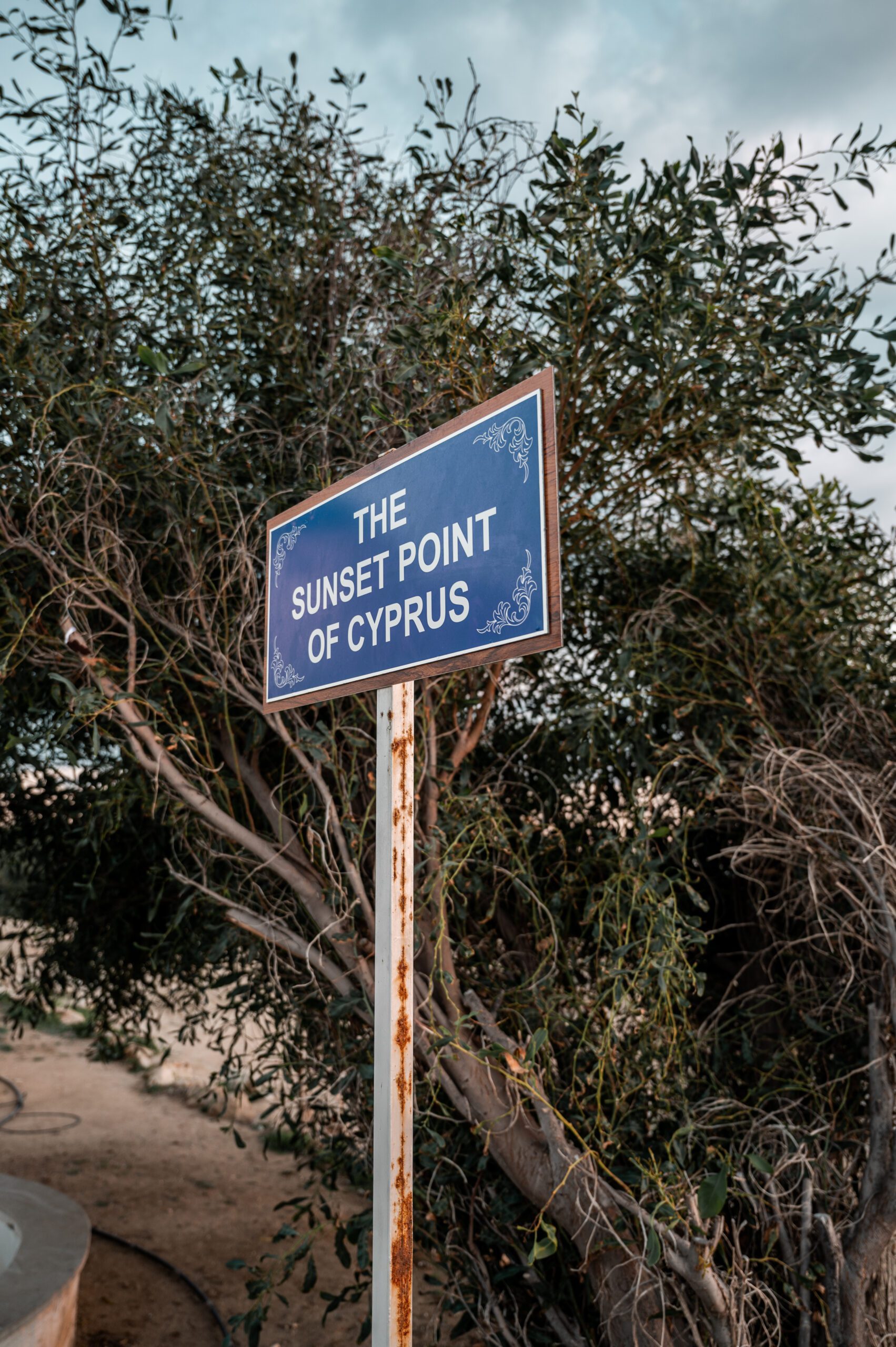
13 Edro III Shipwreck
Just off the coast near the town of Pegeia, you’ll find the wreck of a large cargo ship that ran aground in 2011. It was transporting gypsum from Limassol to Rhodes. The ship’s fuel was properly removed, but it would be too costly to free the ship, so it has remained here as a tourist attraction ever since. The sunset here is especially beautiful.
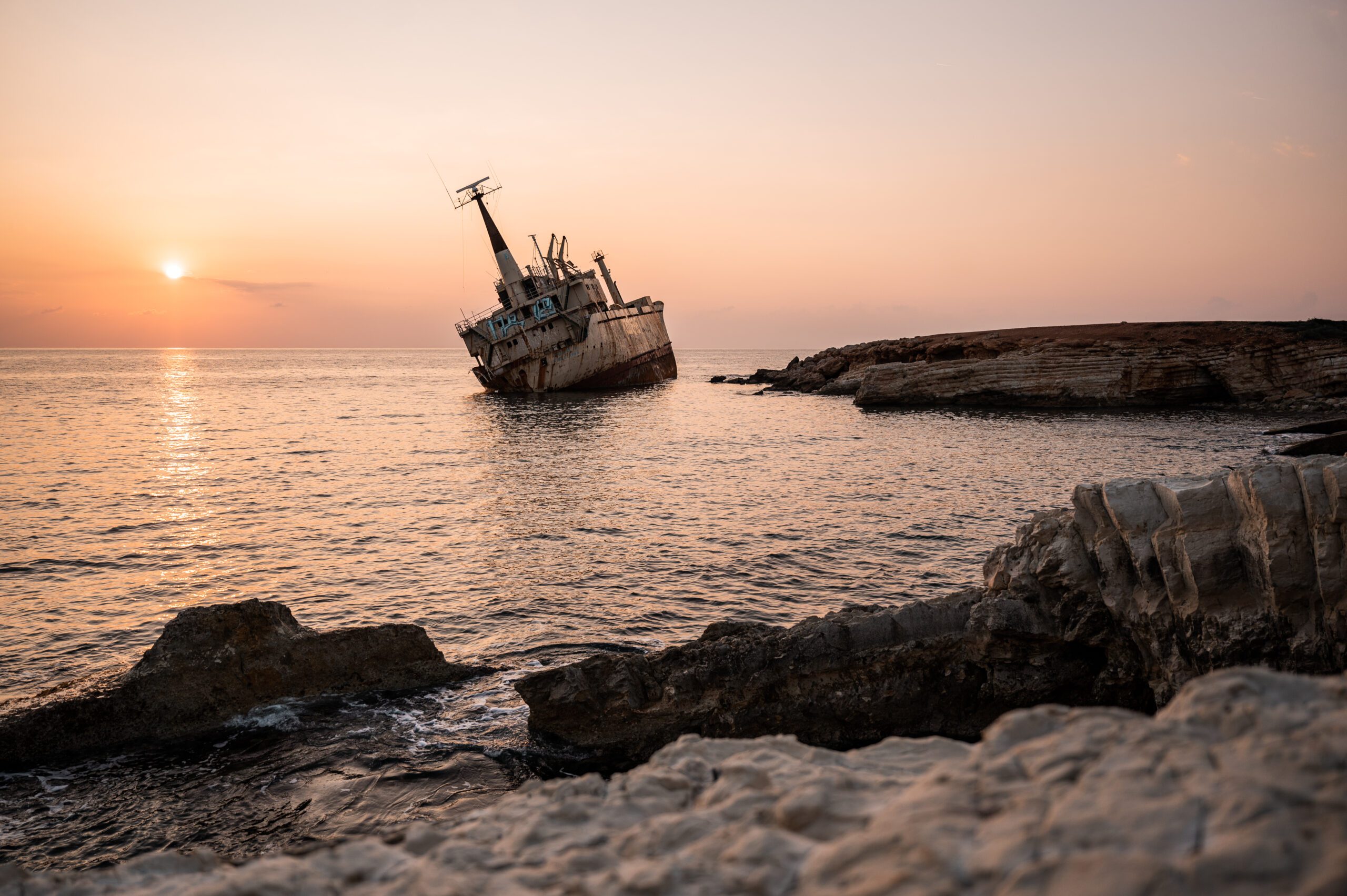





14 Sea Caves Peyia
Length: 2 km one way
Terrain: Easy
Route link: HERE
Entrance fee: Free
And when you’re at the shipwreck, be sure to take a walk along the coast to the next sea caves. There’s a nice path that runs along the shore, about 2 km one way. You can turn back at any point, but I recommend continuing all the way to the end, where you’ll have a really great view of the cliffs.
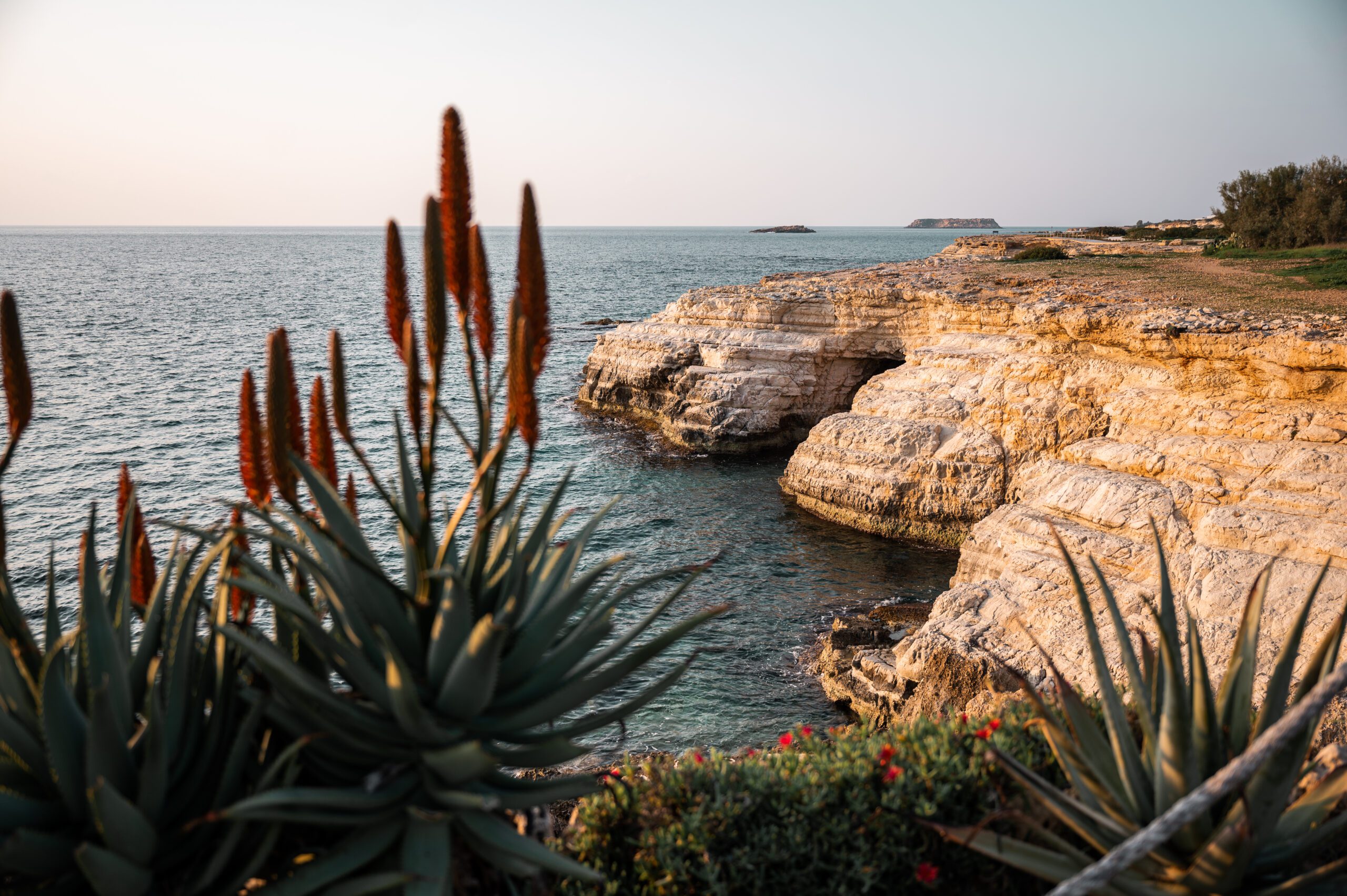














15 Apostolos Andreas Monastery
The monastery on the Karpas Peninsula is the end of the world. There’s no road further east because it ends here. You probably won’t be able to enter (when we visited, the interior was not open to the public), but the bonus is the donkeys that roam around as if the monastery belongs to them.
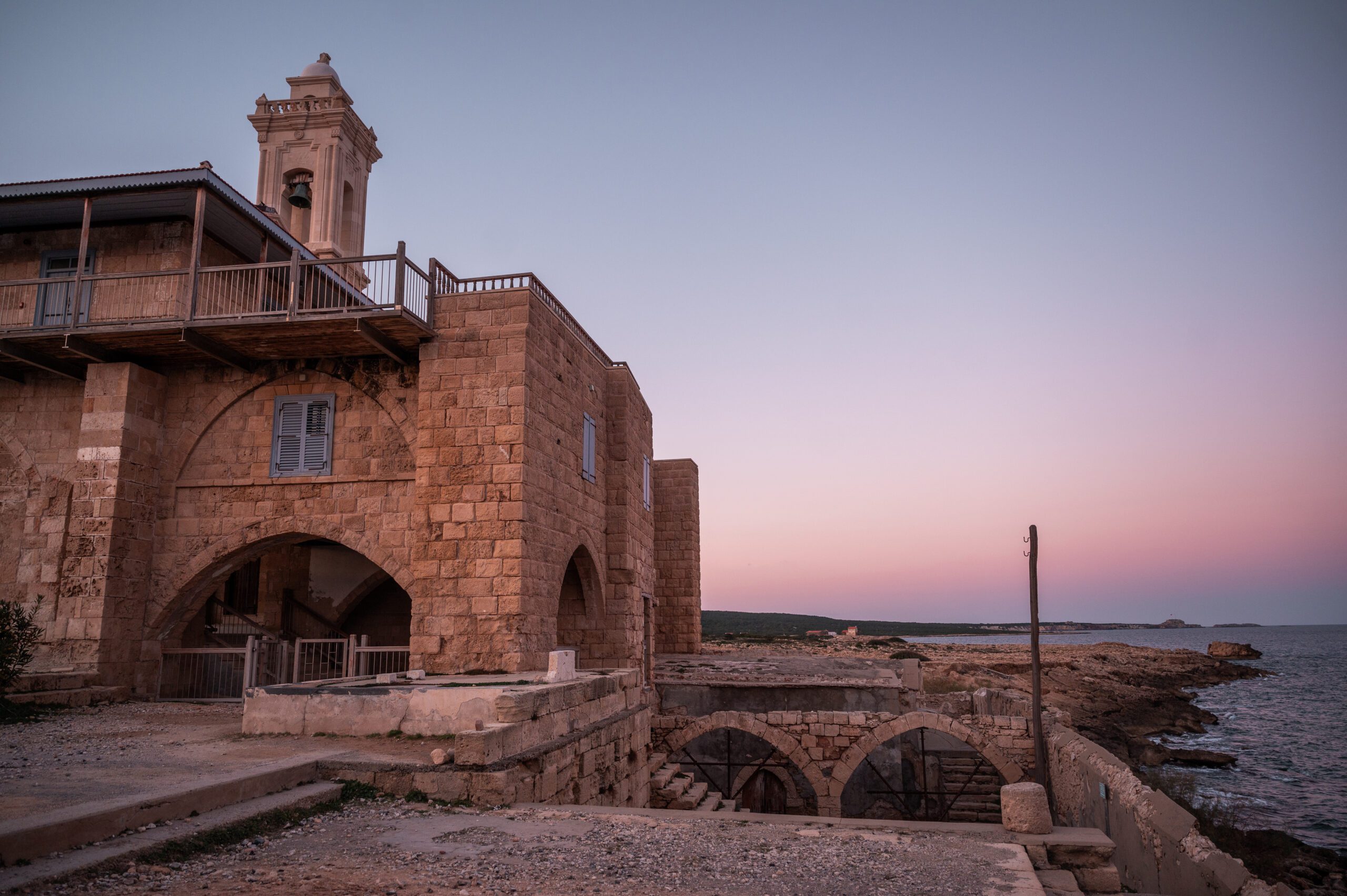



16 Sculpture Park
Parking: HERE
Entrance fee: Free
A sprawling park with sculptures of all shapes and sizes can be found near Lover’s Bridge on the coast of Ayia Napa. If you appreciate art, this is almost a must-see stop, as sculptors from all over the world showcase their work here.
While you’re in the Ayia Napa area, I bet you’ll have an amazing experience at the Museum of Underwater Sculpture. With a snorkel or diving gear, you can explore underwater, where more sculptures are hidden. Unfortunately, we didn’t have time for it, but I still regret it to this day.
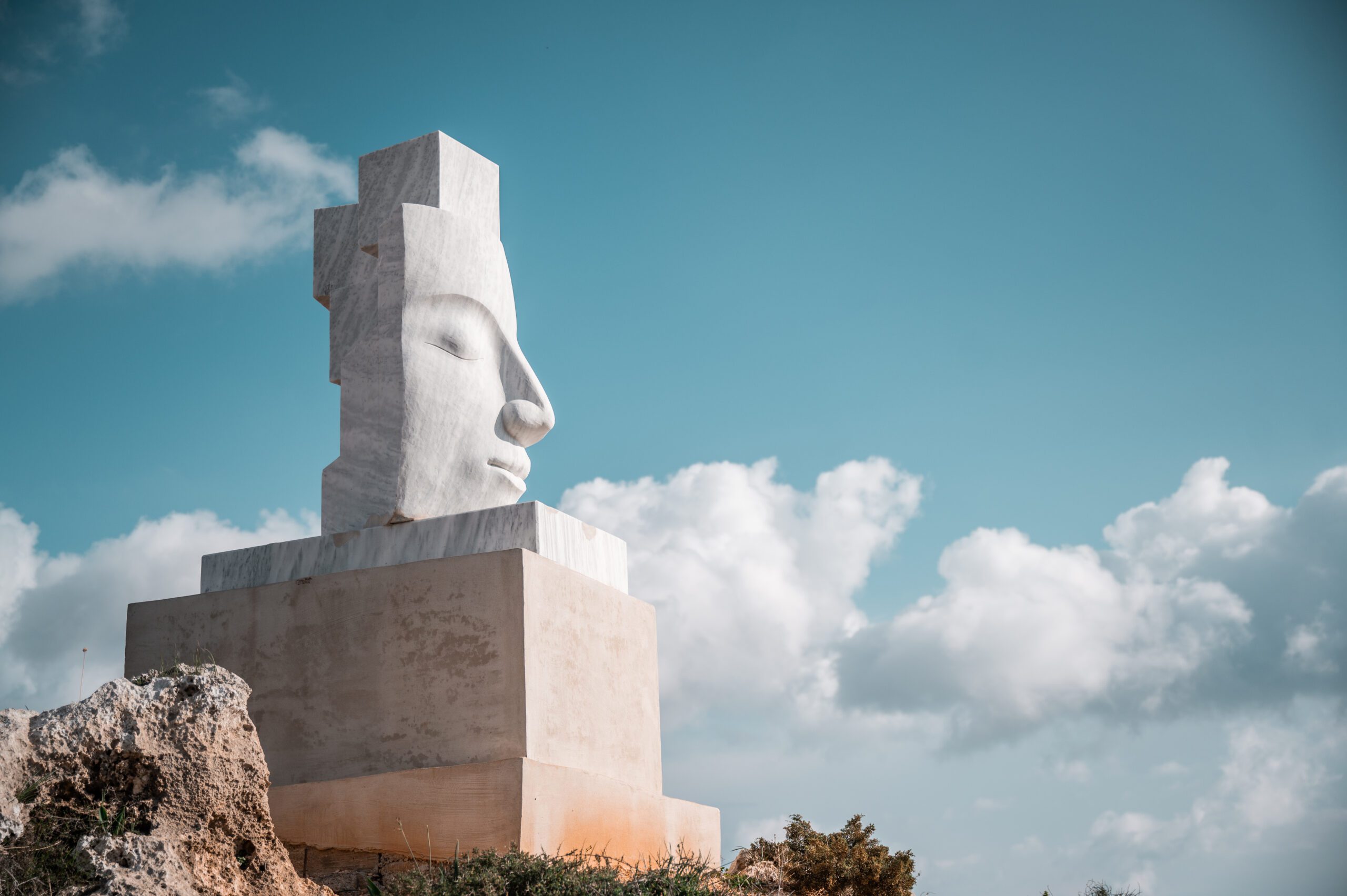









17 Stavrovouni Monastery
The Stavrovouni Monastery is located high in the mountains. What’s interesting is that it’s a male monastery, and women are not allowed to enter its walls. However, you can still reach the parking lot, which offers a truly phenomenal view of the surrounding hills.
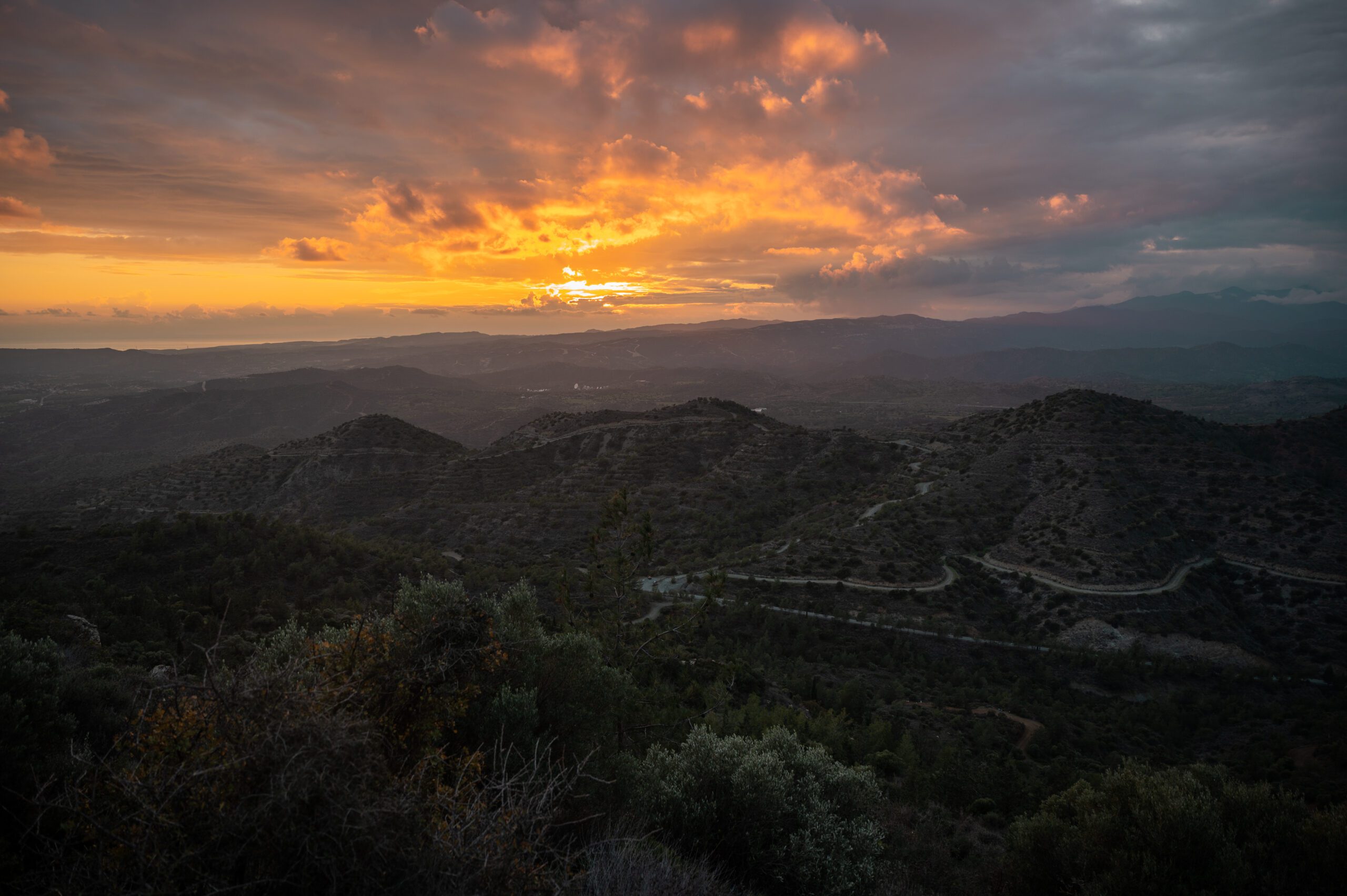

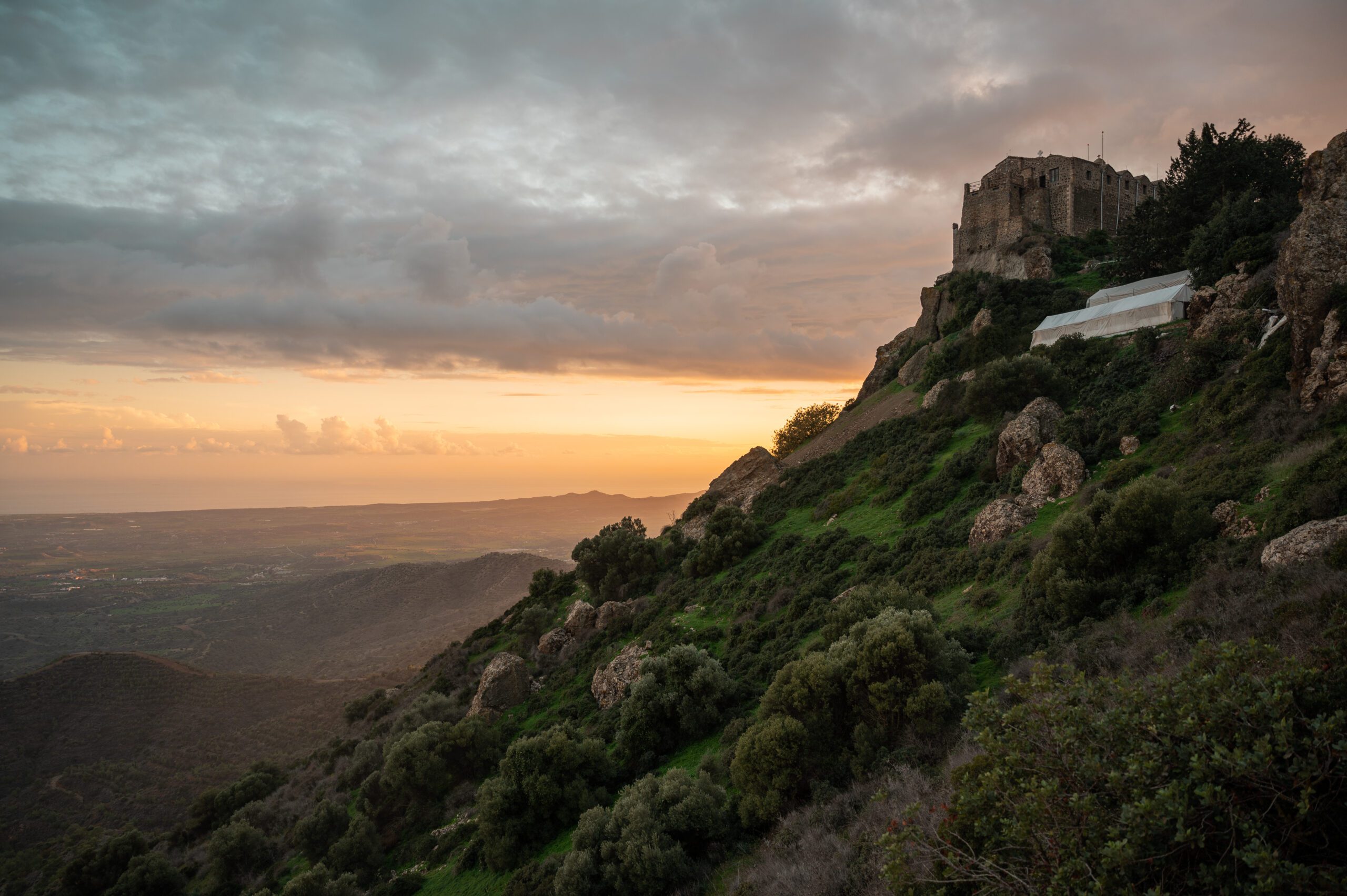

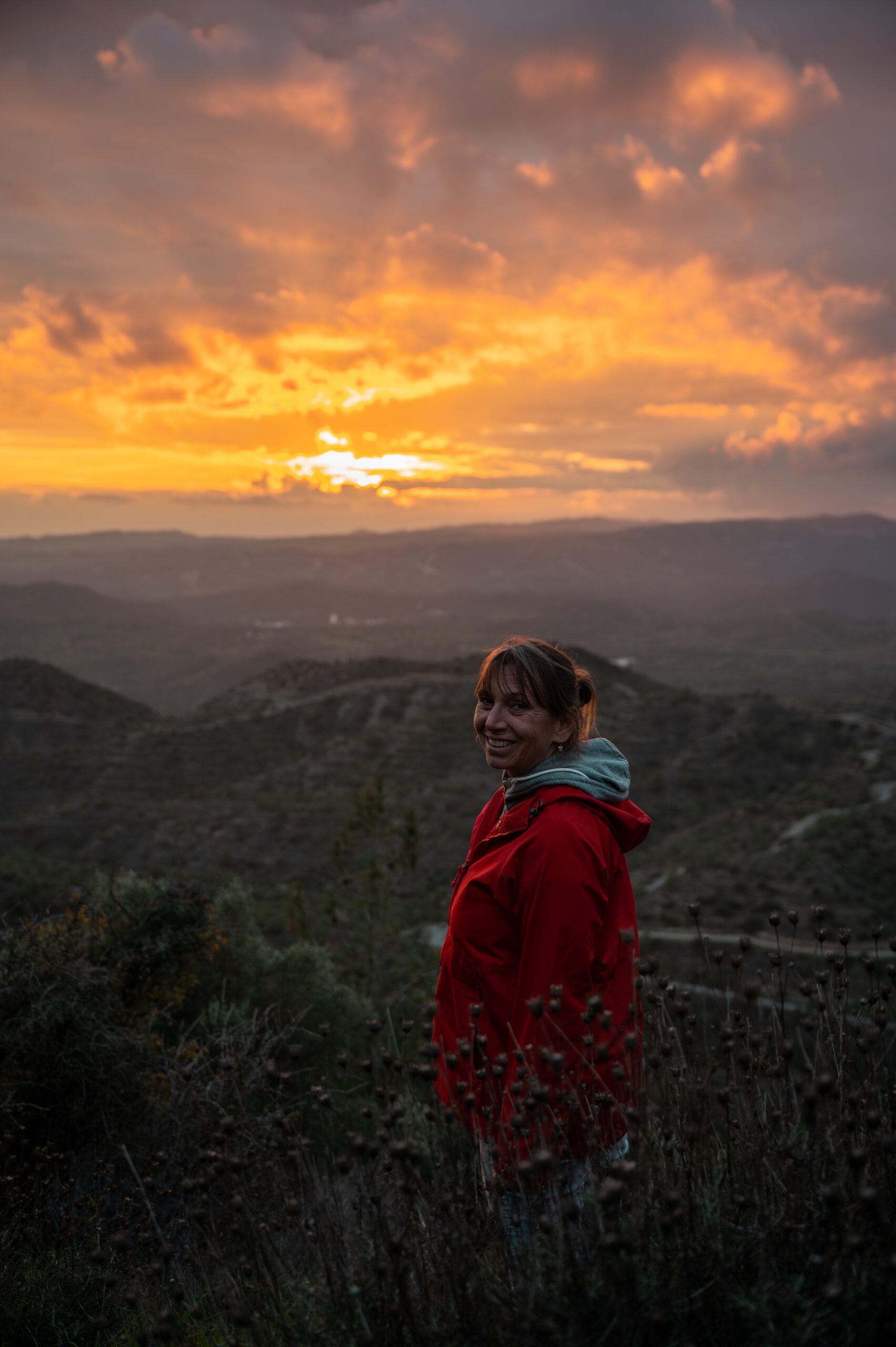



18 Paphos Castle
Parking: HERE
Entrance fee: €2.50 (2022)
You’ll find a medieval harbor castle (with a rather unusual shape for us) in the harbor of Paphos. While you’re heading to the castle, take a stroll along the entire pedestrian promenade at sunset and enjoy a dinner with a sea view. They serve quite good Mediterranean cuisine here.
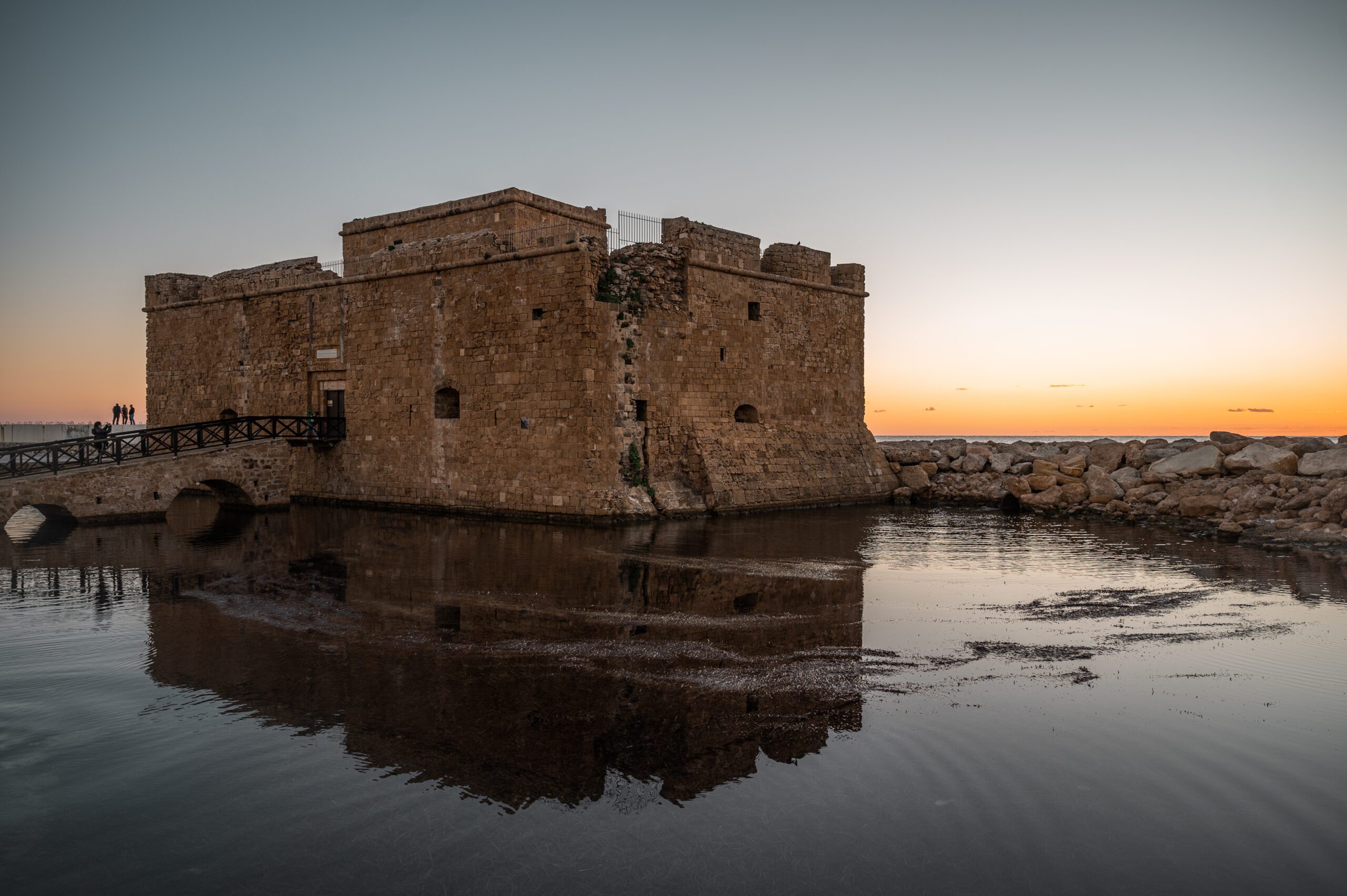





19 Paphos Lighthouse & Roman Odeon
Parking: HERE
Entrance fee: €4.50 (2022)
If you enjoy history and can appreciate historical excavations, you should definitely visit the Archaeological Site of Nea, located in Paphos. It’s listed as a UNESCO World Heritage site. The former capital of the island was built in the 4th century BC, and the best-preserved structure is undoubtedly the Roman Odeon. The site also features an impressive lighthouse that’s hard to miss.



20 Ghost town Varosha
Parking: HERE
Entrance: Free
We also visited the Turkish part of Cyprus, which left us with quite mixed feelings (you can find the entry conditions for the Turkish part in the introduction). From the moment we crossed the border, we felt like we were in a different country. It was nothing like the beautiful, well-kept Cyprus with small white villas along the coast. If you’ve ever been to a Turkish city, you’ll know exactly what I mean. In the Turkish part, we were mainly interested in the abandoned seaside resort of Famagusta, which residents and tourists were forced to leave quickly during the Turkish invasion in 1974. Since then, everything has remained untouched. Rusting cars stand in the streets, shop windows are shattered, buildings are partially collapsed, and trees are growing through them.
The entire area is fenced off with barbed wire, but gradually, this ghost town is starting to open up to tourists. There’s one main entrance by the Good Fellows restaurant, and you can’t enter the abandoned area from anywhere else. The entrance is guarded by police, who will search your bag (Forget about bringing a drone—like us, you’ll have to leave it with the police during your visit. There was also a problem with my camera, as they thought I was a reporter, but eventually, they allowed me to keep it when I insisted that it was just for personal use).
Walking through Varosha gave us chills, but it was definitely an interesting experience that you won’t easily forget.








21 Ancient Kourion
Entrance fee: €4.50
Parking: HERE
Kourion is an ancient city from the 2nd century BC, located on the southern coast of Cyprus. Most of the original structures are now just foundations and Doric columns, which is incredible when you think about the fact that they’ve been standing for over 2,000 years! The main attraction is probably the Greco-Roman theater, which is the only structure fully restored and still serves its original purpose—hosting various concerts and theatrical performances.
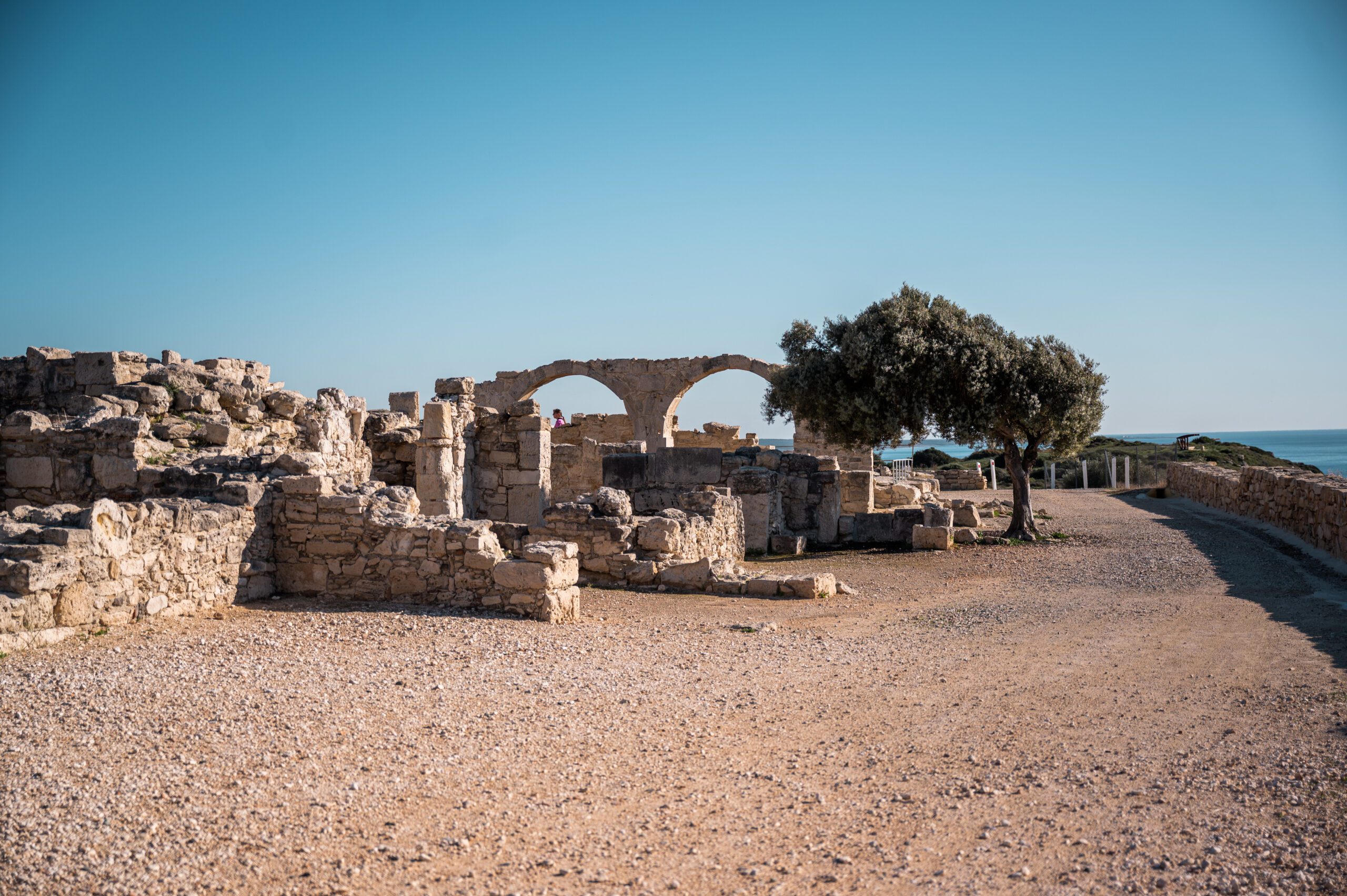

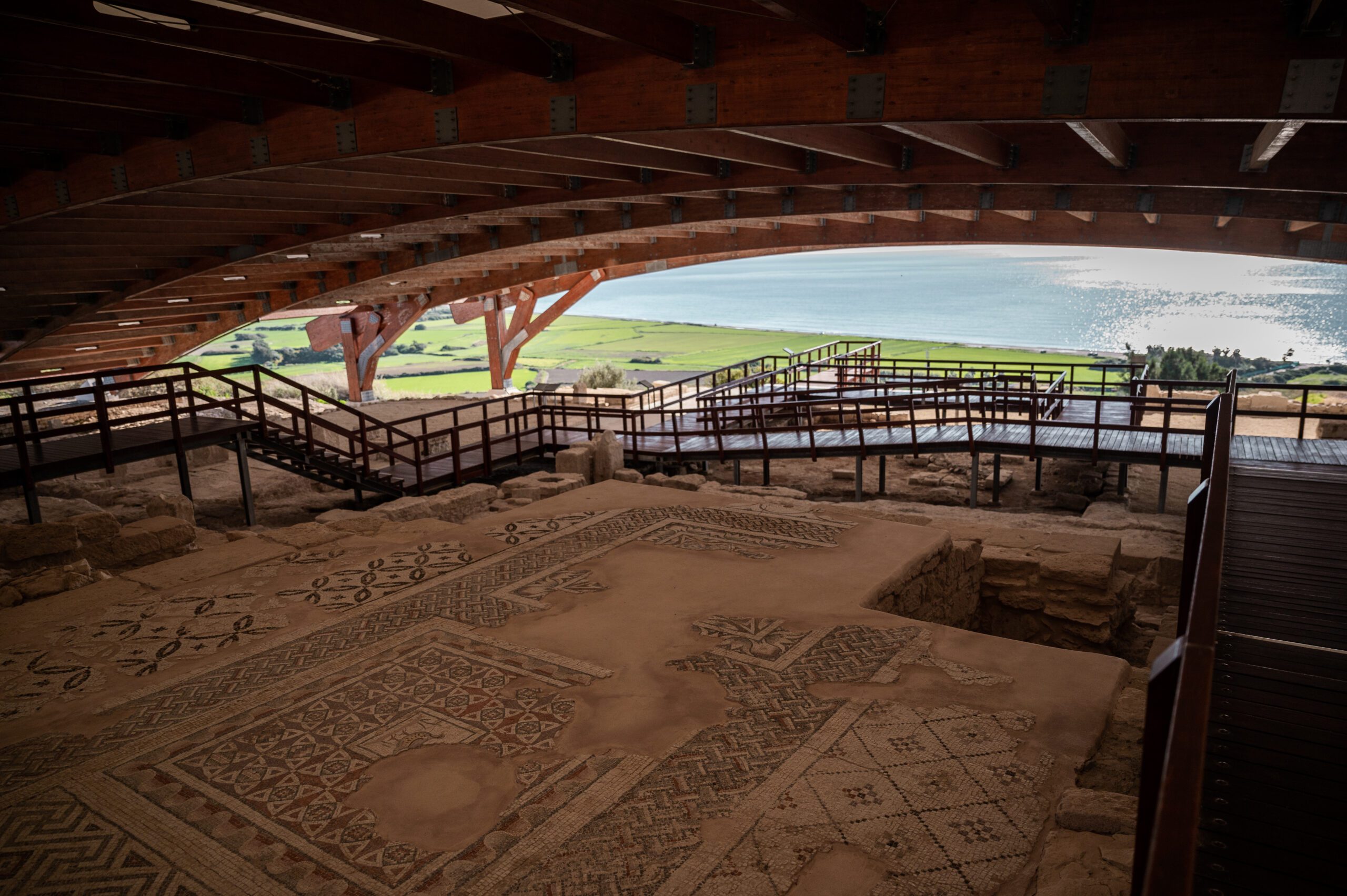


22 Apostole Peter & Saint Helen’s the Martyr Chapel
It wouldn’t be me if I didn’t include a tip on futuristic architecture, which I’m a huge fan of. This tiny chapel can be found in quite an incredible location. Although it may not look like it from the photos, the chapel is literally nestled between houses in a residential neighborhood in Paphos. Unfortunately, we weren’t able to get inside.

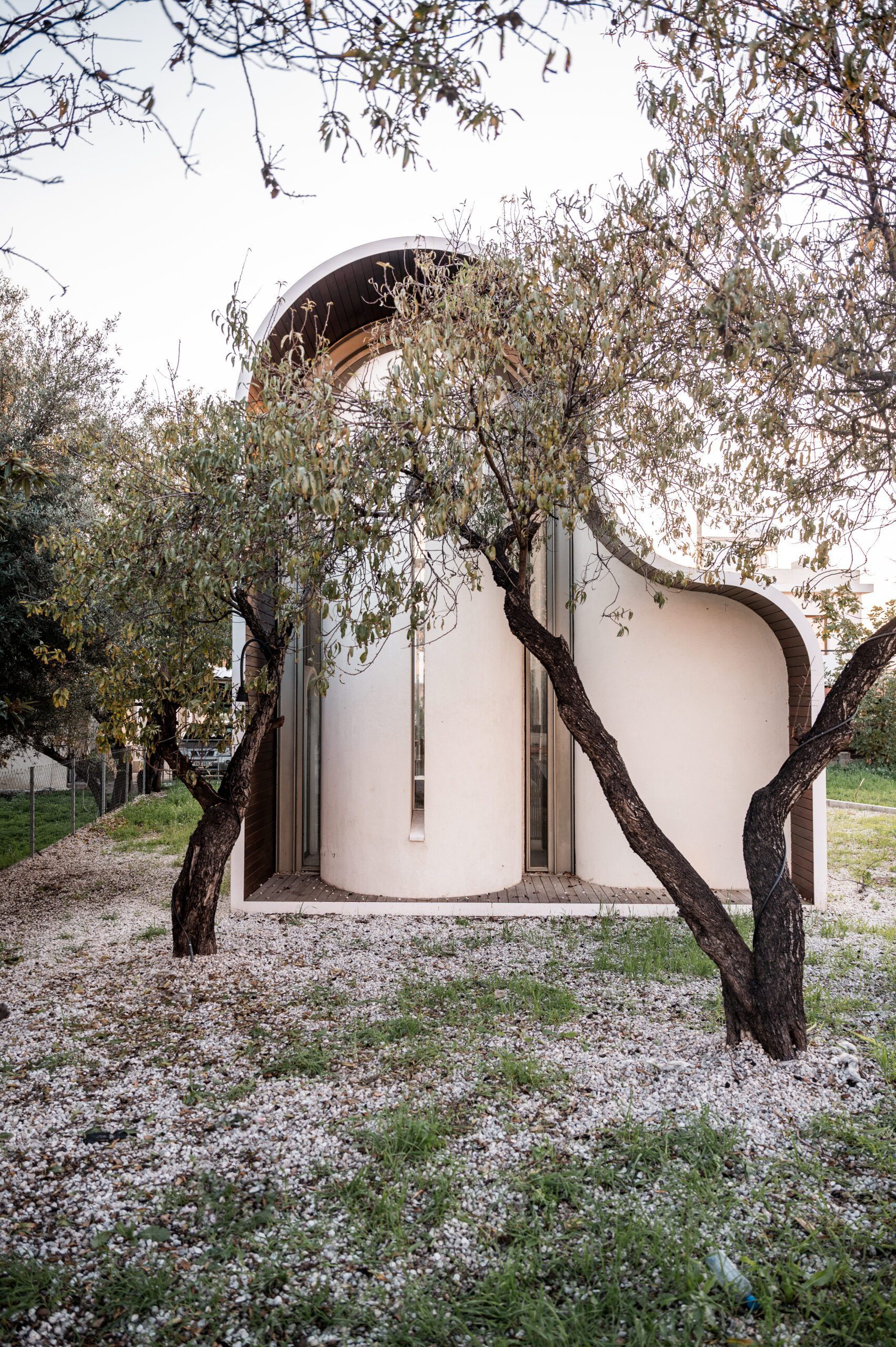

23 Limassol & Limassol Salt Lake
Cities don’t usually excite us much when traveling, but this time we made an exception because, after 10 days, we craved some specialty coffee. The nearest café was in Limassol, so we combined it with a stroll along the promenade. We got our coffee at Wagmi Coffee, which we found on my favorite European Coffee Trip (a map of specialty coffee shops and roasters across Europe—I can’t start my day without it!).
Once you’ve finished your coffee, you can hop back in the car and head to the nearby salt lake. It’s home to wild flamingos! We got lucky and didn’t even need binoculars to spot them. They move around the entire lake, so there’s no single best spot to observe them, but driving around the lake is a good start. If you don’t have any luck at Limassol Salt Lake, you can also try Larnaca Salt Lake.



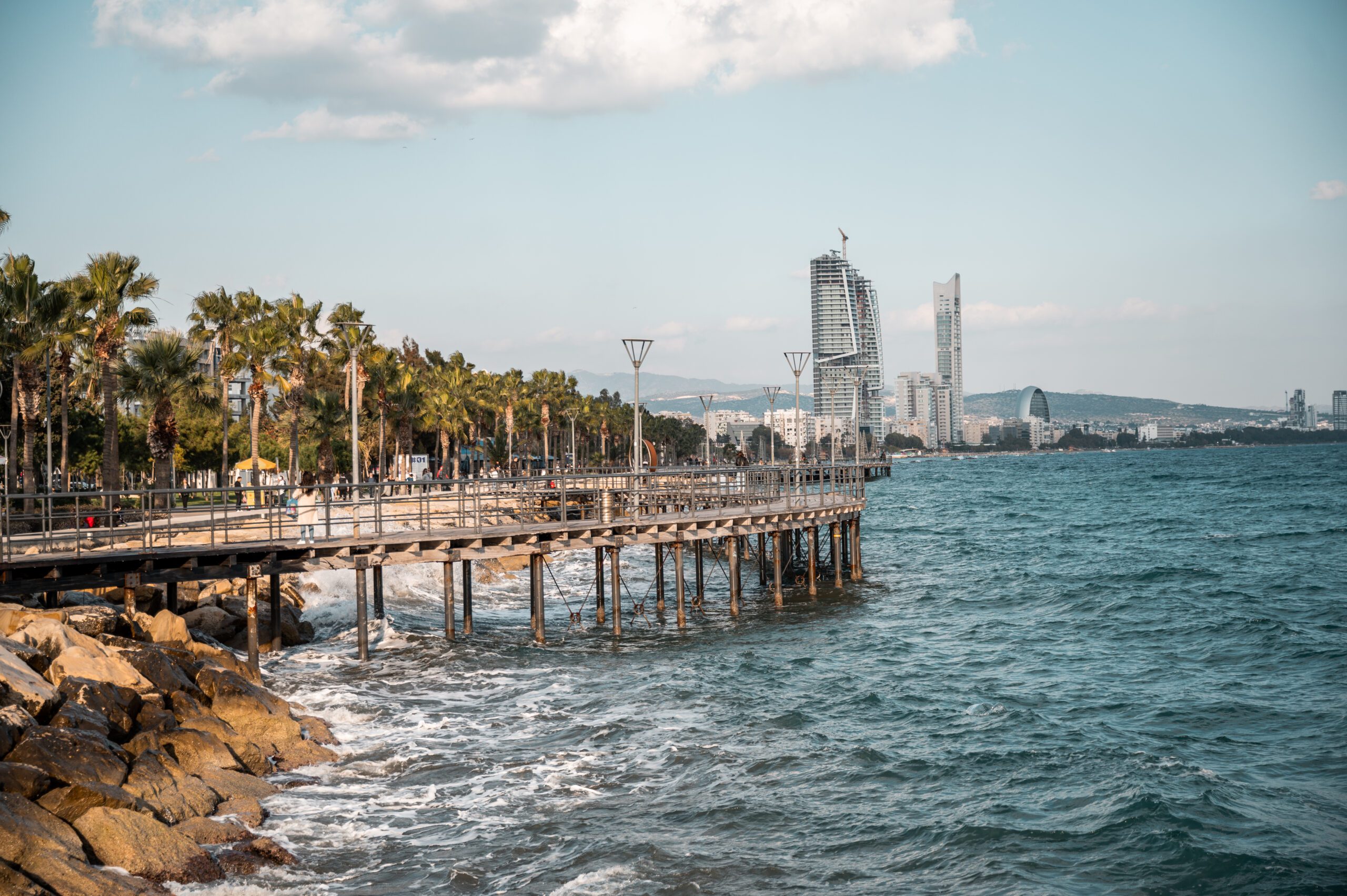

24 Millomeris Waterfall
Length: 200 m one way (via stairs)
Terrain: Easy
Route link: HERE
Entrance fee: Free
You can find a few waterfalls on Cyprus, but don’t expect Iceland-level grandeur. The largest waterfall, Millomeris, is located in the Troodos mountain range. During the winter months, it’s not as spectacular since the surrounding trees are bare, but it must be magical in the autumn. There’s parking about 200 meters from the waterfall.

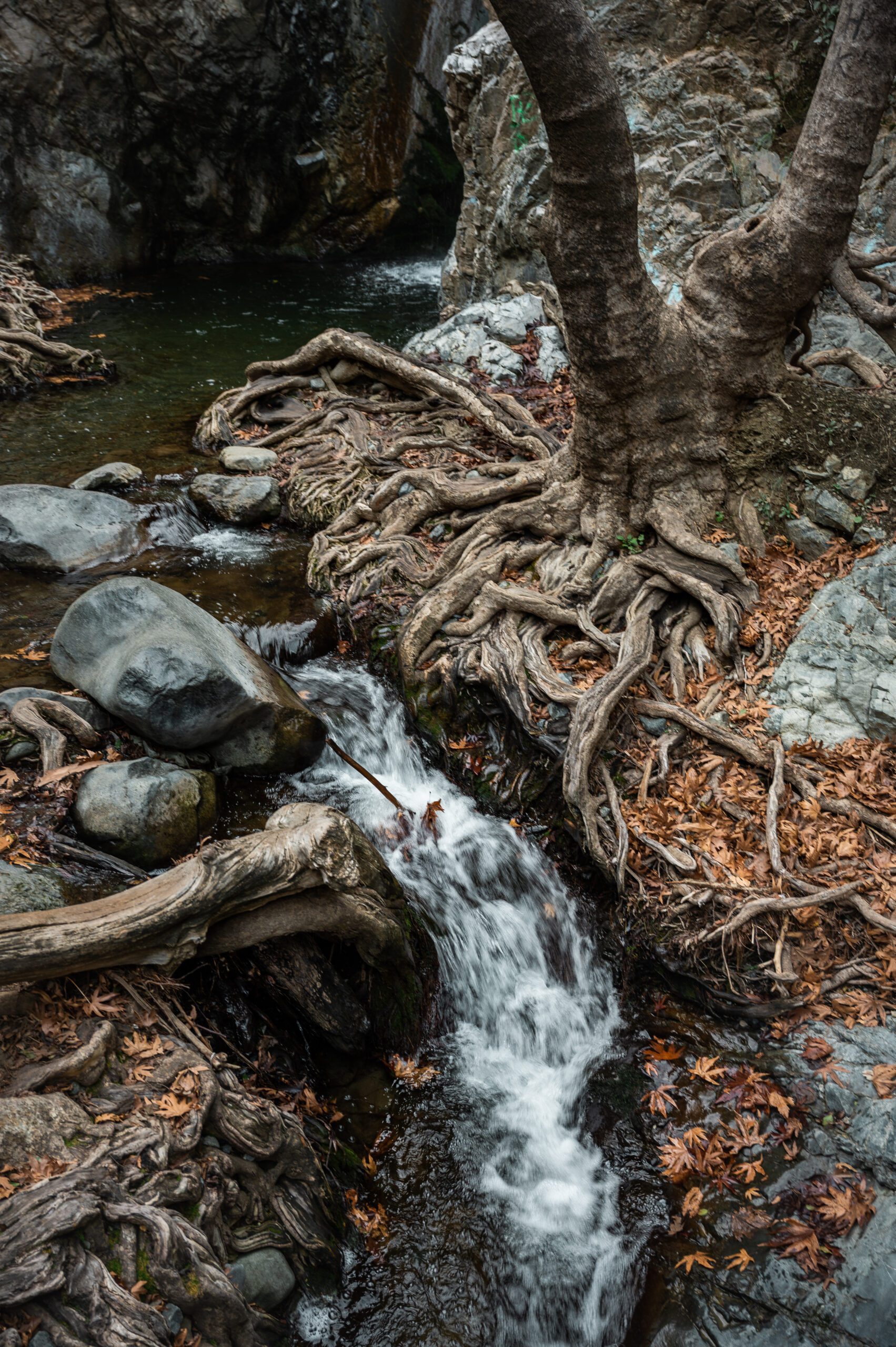


25 Limni Pier
Limni Pier is a simple pier, perfect for jumping into the sea. The water is deep here, so you can have fun for hours. We stopped by after hiking the Aphrodite Nature Trail, so the cool down was quite refreshing.
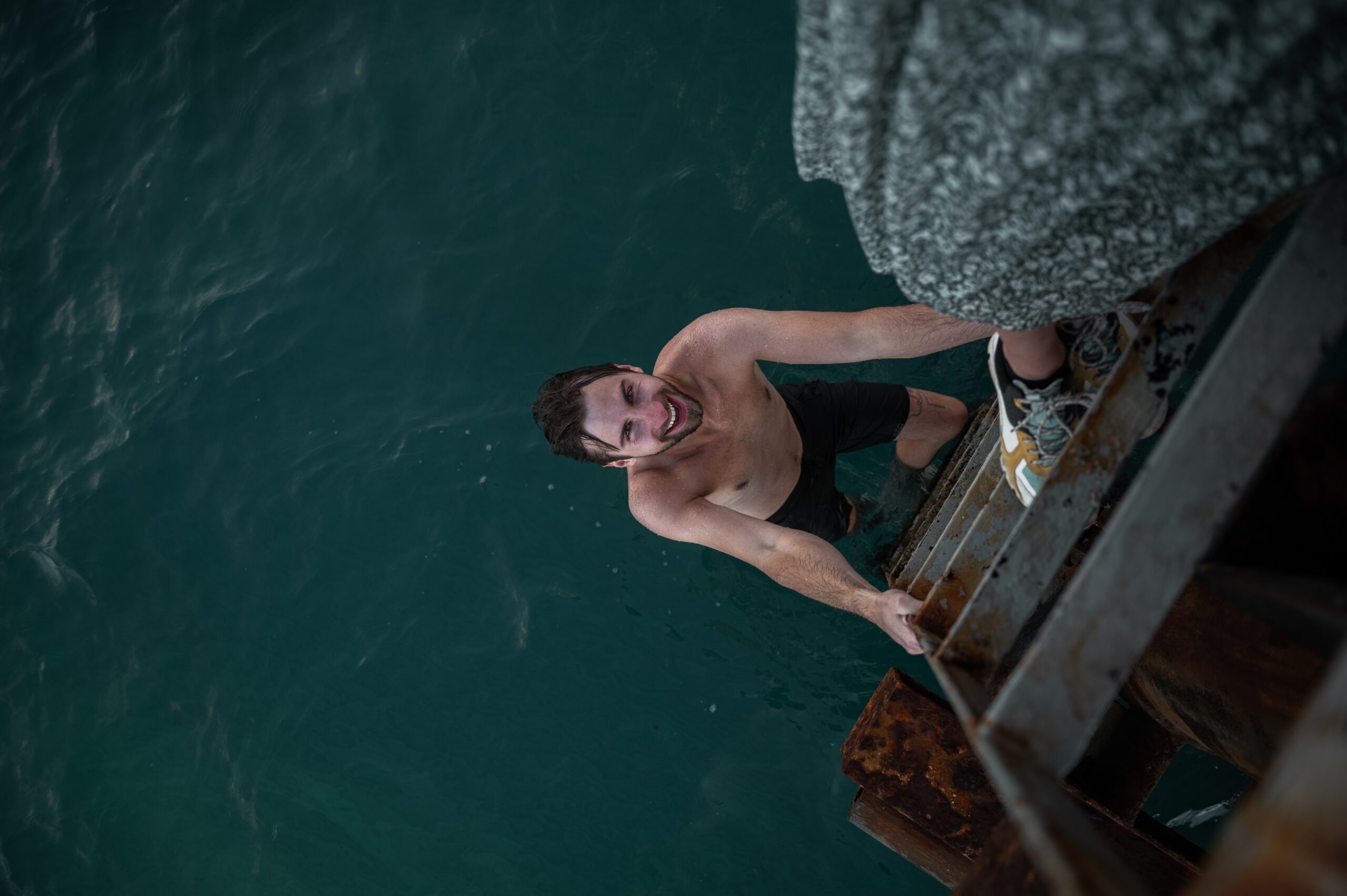












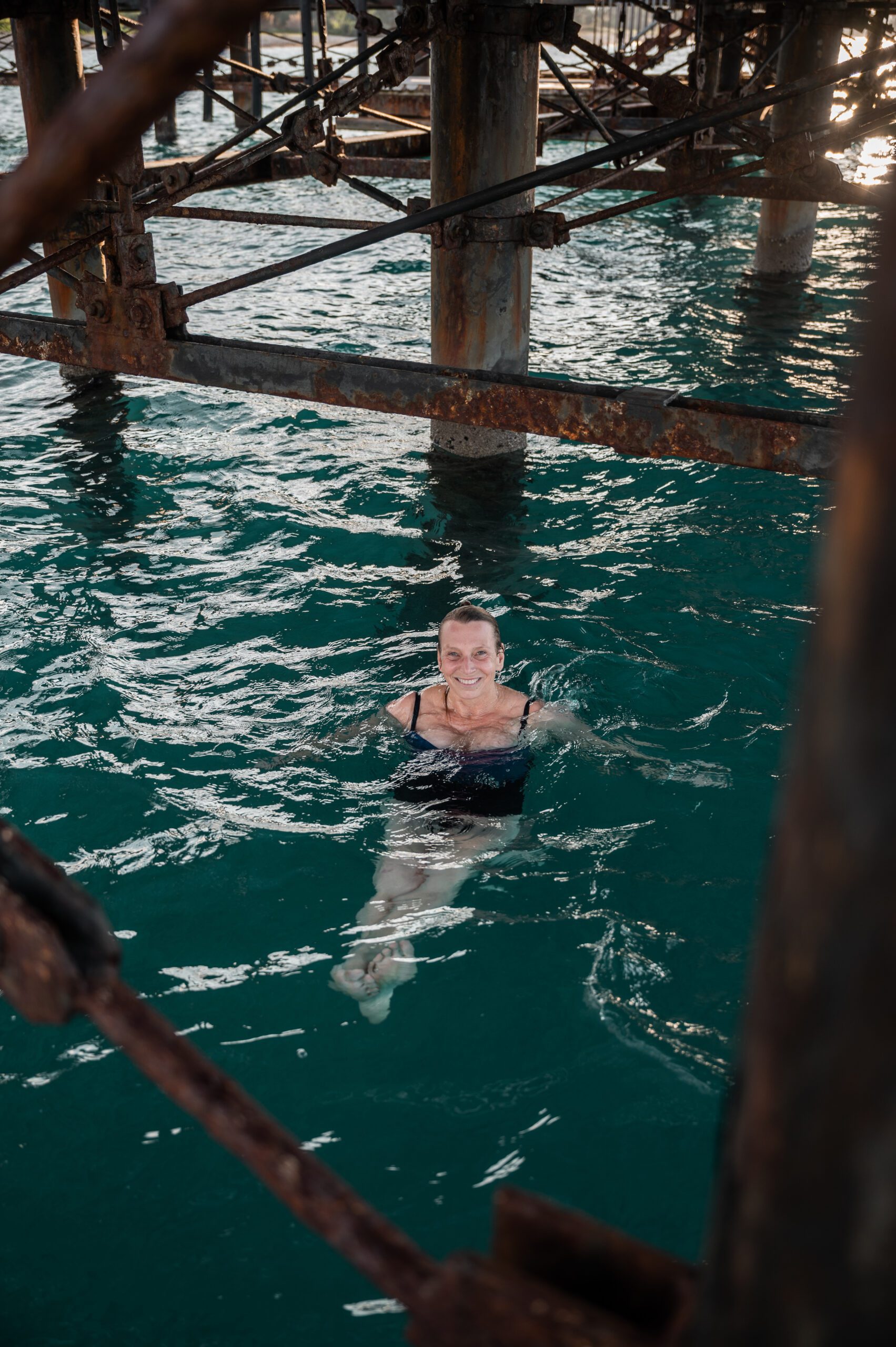

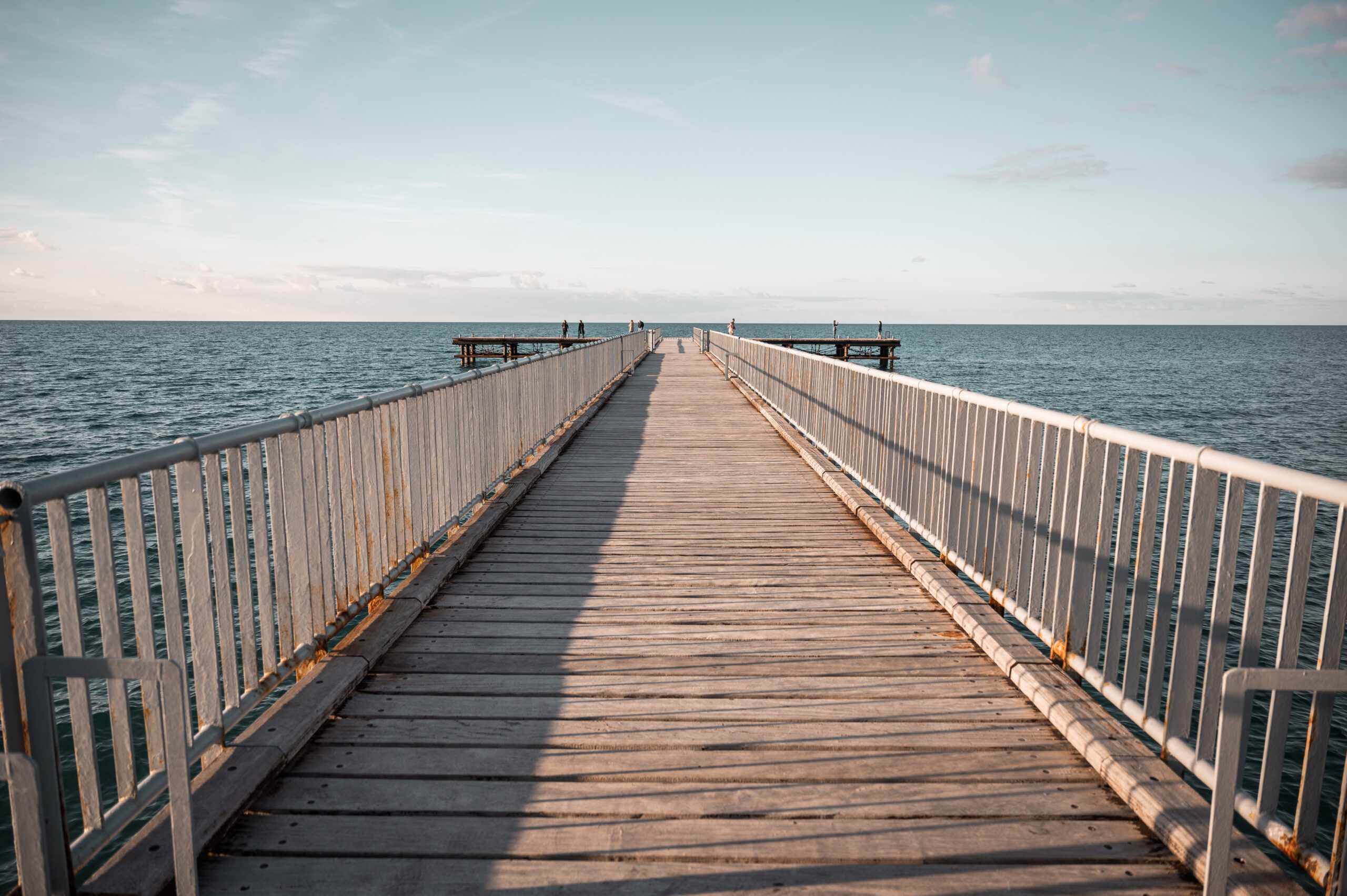
26 Cape Greco & Blue Lagoon
A trip to Cape Greco is a great tip, especially for drone enthusiasts. There’s a turquoise cove called Blue Lagoon, whose color is best seen from an aerial view. However, there are also plenty of hiking trails that everyone will enjoy. In addition, you’ll find many lovely spots to swim and relax.


27 Church of Saint Lazarus
The last tip is a beautiful church in Larnaca. It was also our final stop and a chance to stretch our legs on the way to the airport. Unfortunately, we couldn’t go inside the church because it was January 1st, one of the three days when the church was closed.

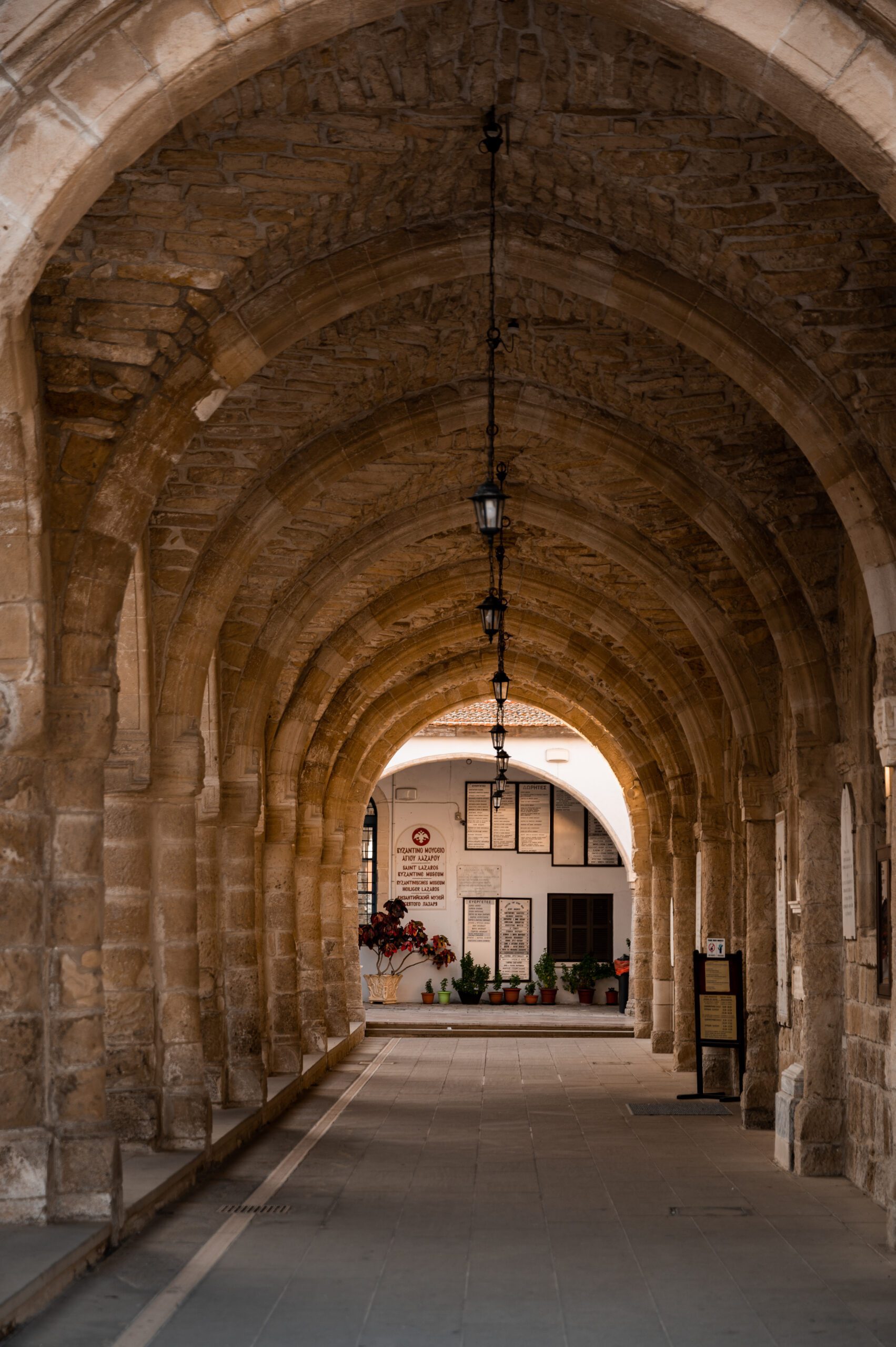

What about you? Does Cyprus intrigue you? Or have you already been? Or do you have a place that you think should be on the list? Let me know in the comments! 🙂
If you liked this article, be sure to check out my Madeira guide, where my family and I spent the previous Christmas.
E.


